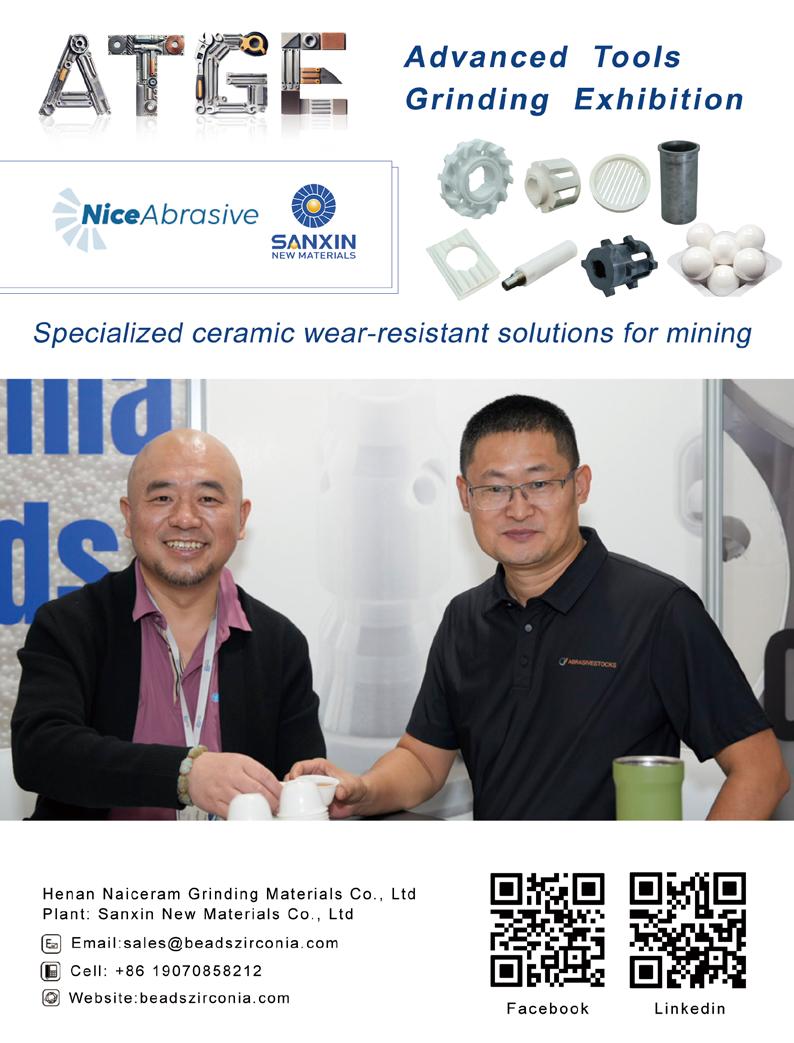

Breaking the Deadlock and Reborn: Thoughts on the Path to AntiInvolution in the Abrasives and Grinding Tools Industry
By Wu Qiaolin
In recent years, from the photovoltaic and new energy vehicle industries to traditional manufacturing, "involution" has become a high-frequency term in the development of Chinese industries. On July 8th, 33 construction enterprises jointly released an initiative against involution, once again bringing this issue to the forefront. In the abrasives and grinding tools industry and its upstream and downstream industrial chains, problems such as low-price competition, repeated investment, and overcapacity are equally severe. When the industry is trapped in the quagmire of "involutionary" competition, how can it break the deadlock? The answer may lie in returning to the essence of the market – improving quality through innovation and optimizing the ecosystem through integration.
As the "teeth" of industrial manufacturing, the technical level and product quality of abrasives and grinding tools directly affect the efficiency of downstream manufacturing industries. However, some enterprises, in order to compete for market share, blindly expand production and sell at reduced prices, leading to a continuous decline in the industry's profit margin. This kind of nonmarket-oriented competition not only squeezes the living space of high-quality enterprises but also makes the entire industry fall into "low-end lock-in" – enterprises are busy coping with price wars and unable to invest in technological research and development. Just as *People's Daily* warned about the photovoltaic industry: when production capacity far exceeds demand, the price collapse of the entire industrial chain will only drag all participants into a "lose-lose" predicament.
Anti-involution is not against competition, but against disorder and inefficiency. The Sixth Plenary Session of the Central Financial and Economic Commission clearly proposed to "regulate low-price and disorderly competition in accordance with laws and regulations," pointing out the direction for the industry. For abrasives and grinding tools enterprises, efforts need to be made in two aspects:
- First, build barriers through technological breakthroughs. Increase investment in research and development in fields such as high-end abrasives, precision grinding tools, and green preparation processes to get rid of homogeneous competition.
- Second, optimize the pattern through mergers and reorganizations. Looking at the history of global manufacturing development, Germany's precision tool industry has formed clusters of technologically leading "hidden champions" through multiple integrations, while Japanese abrasives and grinding tools enterprises have built complete industrial chain advantages through vertical integration. Domestic industries are in urgent need of leading enterprises to play a leading role and improve the efficiency of resource allocation through market-oriented integration.
The battle against involution in the abrasives and grinding tools industry is essentially a reform to return to market laws. Enterprises need to seek survival through innovation. Only in this way can the strange circle of "bad money driving out good money" be ended, and the industry can be promoted from "scale competition" to "value competition," laying a solid foundation for the highquality development of Made in China.
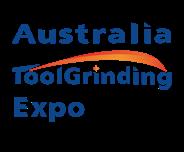


https://atge.com.au/
PREFACE
02| PREFACE
INDUSTRY INFORMATION
04| INDUSTRY INFORMATION
OVERSEAS INFORMATION
13| OVERSEAS INFORMATION
CENTURY-OLD ABRASIVES ENTERPRISE
17| Look at those abrasive, abrasive tool and grinding enterprises with a century of history (Series 9)
EXHIBITION
28| The Australian Hardware, Tools & Grinding Exhibition kicks off; ATGE2025 deepens China-Australia industrial cooperation
31| Moku Participates in Egypt's BIG5 Exhibition to Explore New Opportunities for Cooperation in the Middle Eastern Market
33| Go Global to North America, Focus on Global Metal Manufacturing - Moku Invites You to FABTECH 2025 Chicago Show!
MARKET ANALYSIS
35| Trend Analysis and Prospect Forecast of the Superhard Materials Market(2025-2033)
38| Traditional grinding industry and non-grinding technology: Competition or complementarity?
40| Is low-cost bauxite coming?What impact will Alcoa's expansion plan have on China's alumina and corundum industries?
42| Consumption Trends of Tool Products in European and American Markets.
RAW MATERIAL PRICE TRENDS
55| Overview of China's bauxite, alumina and corundum markets in the first half of 2025.
TECHNOLOGY
62| The functional applications of diamond demonstrate its "kingly demeanor".
71| Cutting is not a brute-force job: Achieving smarter machining with cemented carbide band saw blades
73| How to select suitable grinding beads in wet grinding?
75| Ceramic cutting tools: A powerful tool for high-temperature and high-speed cutting, why haven't they been fully utilized?
Industry Information
Industry News
Moku and CUS - GROUP hold a practical sharing session on enterprise overseas - expansion in Zhengzhou, helping abrasive enterprises explore the Southeast Asian market
On July 4th, Moku and CUS-GROUP will jointly host the "Practical Sharing Session on Enterprise Overseas Expansion" at Futian Fortune Plaza in Zhengzhou. This conference aims to provide one-stop overseas expansion solutions for enterprises in industries such as hardware tools and abrasives, with a key focus on exploring markets in Southeast Asia, including Thailand.
The event will revolve around three core contents: guidance for enterprises with zero experience to get started in overseas expansion, practical case analysis on the conversion of overseas exhibition resources, and strategies for in-depth development of the Thai market. Moku will share practical experiences in areas such as site selection for factory construction in Thailand and docking with local enterprises. It will also introduce its overseas warehouse resources in places like Australia and Germany, as well as its channel layout in markets such as Turkey and India.
CUS-GROUP will share its experience in localized services in countries like Uzbekistan and Egypt. This sharing session offers valuable experience for enterprises planning to explore markets in Southeast Asia and the Middle East, especially for managers of enterprises that have achieved poor results in overseas exhibitions. It provides a full-chain overseas expansion solution from market research to on-the-ground operation through resource integration. (Source: Moku Network)
Henan University of Technology successfully held the Development Forum on Abrasives, Grinding Tools and Coated Abrasives Industry.
On June 29th, the "Forum on the Development of Abrasives, Grinding Tools and Coated Abrasives Industry" hosted by Henan University of Technology was successfully held in Zhengzhou. With the theme of "Technological Innovation, Creating the Future Together", the forum attracted numerous industry experts, scholars


and enterprise representatives to attend.
The forum included sessions such as special reports and technical discussions, focusing on cutting-edge technologies and development trends in the industry.
Zhao Zhiwei, Dean of the School of Materials Science and Engineering at Henan University of Technology, introduced the school's breakthrough achievements in fields such as high-speed rail track grinding and semiconductor processing. A number of experts shared innovative technologies such as low-temperature ceramic binders and the substitution of superhard tools, among which vacuum brazed products attracted much attention due to their environmental protection and high efficiency. Chen Peng, Secretary-General of the China Machine Tool & Tool Builders' Association, pointed out that although the industry is facing the challenge of weak supply and demand, its technological innovation capability continues to strengthen. Bai Ning, SecretaryGeneral of the National Abrasives & Grinding Materials Committee, put forward suggestions on enterprises' overseas development strategies, emphasizing the need to grasp policy dividends and expand international markets through exhibitions. Experts at the forum agreed that the industry will develop towards high precision and greenization in the future, and the in-depth integration of industry, academia and research is the key to promoting high-quality development.
This forum has built an important platform for collaborative innovation in the industrial chain, helping the industry seize new opportunities and cultivate new productive forces. (Source: Moku Network)
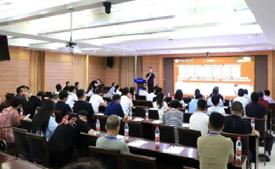


Zhengzhou High-tech Zone Establishes an 800-Million-Yuan Superhard Materials Fund
According to Zhengzhou High-tech Industrial Investment Group, recently, the "Henan Superhard Zhencai Equity Investment Fund" – the first subfund for superhard materials in the High-tech Zone, jointly established by Zhengzhou High-tech Industrial Investment Fund, Henan Investment Group, Henan Capital Group and other provincial-level platform companies – has been officially set up. This marks that the innovative practice of provincial and local capital collaborating to empower regional leading industries has entered a stage of substantive operation. Tianyancha (a corporate information inquiry platform) shows that the capital contribution of the aforesaid fund is 800 million yuan.
Operated by Henan Investment Group Huirong Fund Management Co., Ltd., the fund is aligned with the layout of regional strategic emerging industries. Its investment direction focuses on tackling key core technological issues in the field of superhard materials, while simultaneously extending to national strategic emerging industrial tracks such as semiconductor materials, new energy materials, and high-end chemical new materials. It will play the leading role of state-owned capital, realize the in-depth integration of provincial-level innovation resources with the solid industrial foundation of the High-tech Zone, help industrial chain enterprises break through "bottleneck" technical problems, and promote the formation of a collaborative development loop featuring "provincial capital guidance and regional industrial implementation". (Source: Dahe Financial Cube)
Henan Breaks Through Key Technologies in Diamond Semiconductors, Accelerating the Layout of Future Industries
Recently, Henan's superhard materials industry has achieved a major breakthrough. Huanghe Whirlwind Co., Ltd. has successfully developed 6-8 inch MPCVD polycrystalline diamond wafer technology, which can significantly improve the heat dissipation performance of chips and is expected to be applied in the optical field in the future. As "China's first listed company in the superhard materials industry", Huanghe Whirlwind
Industry Information
has jointly established a semiconductor company with a Suzhou-based enterprise to accelerate the industrialization of diamond heat dissipation materials.
Henan is a key hub of China's superhard materials industry, with its synthetic diamond output accounting for 80% of the national total and 76% of the global total. At present, the province has formed a complete industrial chain: Shangqiu Liliang Diamond's semiconductor heat sink project has been put into production, and Nanyang Zhongnan Diamond has successfully developed products such as large-size diamond single wafers. More than 20 national-level innovation platforms and over 80 breakthroughs in key technologies are driving the transformation and upgrading of Henan's diamond industry from the traditional "industrial teeth" to the "ultimate semiconductor material". The Department of Industry and Information Technology of Henan Province stated that it will deepen the integration of technological innovation and industry, continue to consolidate its leading position in the global superhard materials field, and provide new impetus for the development of future industries. (Source: Xinhua Daily Telegraph, Henan Daily Client)
The research team of Xidian University has made a breakthrough in (110) crystal plane diamond growth technology, aiding the upgrading of semiconductor devices.
Professors Zhang Jincheng and Zhang Jinfeng from the team led by Academician Hao Yue of Xidian University (Xi'an University of Electronic Science and Technology) published their research results in the international journal *Applied Surface Science*. They revealed for the first time the enlarged growth mechanism of (110) crystal plane single-crystal diamond, providing a new path for the development of high-performance semiconductor devices.
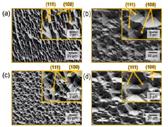
Industry Information
The research team adopted MPCVD technology and successfully improved crystal quality by optimizing methane concentration and introducing oxygen, with a growth rate reaching 16.6 microns per hour. The study discovered the synergistic mechanism of CH and C groups, which made the growth rate of the (110) crystal plane twice that of the (100) crystal plane. Through 100 hours of epitaxial growth, the team obtained a diamond single wafer with a thickness of 3.1 millimeters and a 75% expansion in the area of the (110) crystal plane, and confirmed that lateral expansion can effectively reduce dislocation density. This achievement fills the gap in the research on (110) diamond epitaxial growth, laying a foundation for applications in fields such as 5G communication and aerospace devices. The research is supported by projects including the National Key Research and Development Program and the National Natural Science Foundation of China. (Source: Wide Band Gap Semiconductor Technology Innovation Alliance)
China
A research team led by Professor Huang Xiaoli from the School of Physics, Jilin University, in collaboration with Professor Cui Tian from Ningbo University and other researchers, has achieved a major breakthrough in the field of diamond anvil cell technology. They have, for the first time in China, realized ultra-high pressure loading exceeding 500 GPa, a pressure equivalent to 1.5 times the pressure at the Earth's core. The relevant results were published in the journal *Physical Review B*.
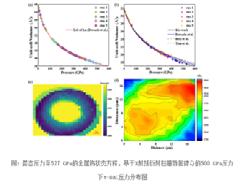


The research team innovatively improved the design of "masonry-type diamond anvils" (mt-DACs) and optimized the stress distribution of diamonds, successfully breaking through the 400GPa limit of traditional technologies. In the experiment, metal tungsten was selected as the calibration material, and it was found that it maintained a stable body-centered cubic structure even under the extreme pressure of 527GPa. This achievement provides key technical support for the study of Earth's internal structure and the development of new materials under extreme conditions. (Source: School of Physics, Jilin University)
A 265-million-yuan diamond semiconductor project settles in Xinjiang.
Recently, Urumqi Ganquanbao Economic and Technological Development Zone signed an agreement with Nanjing Chuxin Electronics and Fujian Dazhuo Holdings. The fourth-generation diamond semiconductor project with a total investment of 265 million yuan has been officially launched. The project is scheduled to start construction in September 2025 and put into production in May 2026, with an expected annual output value of 324 million yuan.
The project mainly produces heat sinks for highend GPU heat dissipation and cultivated diamonds, adopting chemical vapor deposition technology. After putting into production, it will achieve an annual output of 40,000 carats of products, filling the gap in related domestic fields. Ganquanbao Economic and Technological Development Zone stated that the project will drive the development of the regional semiconductor industry chain and help upgrade Xinjiang's strategic emerging industries. It is reported that Xinjiang's advantages in energy costs and policy support are the key factors attracting enterprises to invest. (Source: China News Network)
The Joint Laboratory for Semiconductor Superhard Materials was unveiled in Suzhou, aiming to tackle the challenges in the localization of high-end tools.
On May 16, the "Joint Laboratory for the
Breaks Through 500GPa Ultra-High Pressure Technology, Setting a New Record for Diamond Anvils


Application of Superhard Materials in Advanced Semiconductor Processes" was officially unveiled and established at the Gusu Laboratory. Co-founded by Gusu Laboratory and Suzhou Saier Technology, the laboratory focuses on the research, development and application of high-performance grinding and cutting tools for semiconductor manufacturing, aiming to solve the "bottleneck" problem that the localization rate of China's high-end process tools is less than 15%.
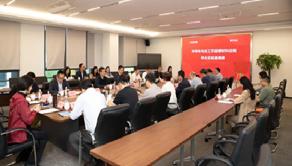
The laboratory will build an innovation base integrating a testing platform, a public service platform and a testing center, providing professional testing services for semiconductor enterprises in the Yangtze River Delta. Ran Longguang, Chairman of Suzhou Saier Technology, stated that the laboratory will be committed to breaking through the bottlenecks in semiconductor precision processing technology. Xu Wenqing, Executive Deputy Director of Gusu Laboratory, pointed out that the laboratory will promote technological progress and industrial upgrading in the field of semiconductor superhard materials. (Source: Gusu Laboratory)
Shengquan New Materials' pilot test platform for functional special resins has been included in the provincial list.
The Shandong Provincial Department of Industry and Information Technology recently announced the list of manufacturing pilot test platforms for 2025. The "Shandong Provincial Pilot Test Platform for Functional Special Resins" built by Shandong Shengquan New Materials Co., Ltd. was successfully selected. This platform focuses on the pilot test transformation of high-value-added products such as advanced
Industry Information
packaging materials, electronic phenolic resins, and special epoxy resins, and is committed to solving the problems in the industrialization of scientific research achievements.
As the world's largest producer of phenolic resins, Shengquan New Materials provides key materials for national key projects such as aerospace, nuclear power, and high-speed railways. The company has achieved counter-cyclical development through continuous innovation. The construction of this platform will focus on breaking through the research and development of functional resins with ultra-low dielectric properties and high temperature resistance, and accelerate the application and transformation of products in advanced packaging and other fields. In the future, the platform will open and share pilot test resources, strive to become a national-level pilot test base, and enhance the collaborative innovation efficiency of the industrial chain. (Source: Shengquan Group)
Scientists have assembled a new diamond structure using nanoscale tetrahedrons, which exhibits unique optical properties.
An international research team published the latest results in the journal *Nature Materials*, successfully self-assembling a new type of "octa-unit-cell diamond" structure using gold nanoscale tetrahedrons. The study was jointly completed by scientists from the U.S. Brookhaven National Laboratory, Columbia University, and the University of Michigan.
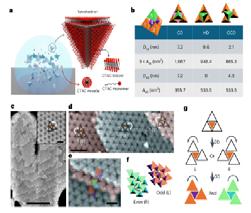
Industry Information
Researchers used the solvent evaporation method to enable CTAC-coated gold nanoscale tetrahedrons to self-assemble into a special crystal structure on a hydrophobic substrate. Scanning electron microscopy observations showed that the structure is composed of 64 tetrahedrons forming 8 cubic diamond sub-units, creating a double-layer "vortex" pattern with opposite chiral characteristics. Although the crystal is symmetric overall, its surface can produce a significant chiral optical response—in the wavelength range of 650-820 nanometers, the left-handed and right-handed regions show obvious differences in light scattering.
The uniqueness of this low-density diamond structure lies in the fact that four intersecting cubic unit cells can be observed along the [111] direction, and the tetrahedrons in the double layer rotate to form a honeycomb pattern. The study also found that the hydrophobicity of the substrate is crucial for structure formation, and a hydrophilic substrate will lead to different assembly results. This breakthrough not only reveals a new mechanism of nanoparticle self-assembly, but its special optical response characteristics also provide new ideas for the research and development of new optical sensors and encryption materials, and are expected to be applied in the field of optoelectronic materials in the future. (Zhengzhou Research Institute, China University of Geosciences (Beijing))
Meichang Co., Ltd. terminates two diamond wire projects, adjusts production capacity to cope with market changes.
On April 24, Meichang Co., Ltd. announced the termination of the subsequent construction of the diamond cutting wire substrate project and the highefficiency electroplated diamond wire production line project.
The diamond cutting wire substrate project was originally planned to have a total investment of about 159 million yuan, with three phases of construction to build a production line with an annual output of 6,000 tons of diamond cutting wire substrates. At present, the first-phase production line with an annual


output of 2,000 tons has been completed and put into operation, with a cumulative investment of 94 million yuan. The company stated that due to changes in the industry environment, market supply and demand, and product structure, the existing production capacity has met the demand, so it has decided to terminate the construction of the second and third phases.
The total investment of the high-efficiency electroplated diamond wire production line project does not exceed 400 million yuan. It was originally planned to build 210 production lines, forming an annual production capacity of 43 million kilometers of diamond wires. At present, 112 production lines have been completed and put into operation, with a cumulative investment of 255 million yuan, and another 72 sets of equipment have not yet been installed. The company said that affected by changes in the photovoltaic market, the existing and underconstruction production capacity can already meet the demand, so the remaining construction will be terminated.
Meichang Co., Ltd. stated that this adjustment is a prudent decision based on changes in the market environment and supply and demand. In the future, it will focus on the optimization of existing production capacity and business layout. (Source: CMM Jianghu Shuo)
The project with a total - investment of 5 billion yuan and an annual output of 3 million carats kicks off.
The Jiuquan Base started construction grandly on April 28, 2025. With an annual output capacity of 3 million carats, it leverages the new energy industry belt in the Hexi Corridor, integrates wind and solar power resources and policy dividends, and builds a green and low-carbon mass production system. The total investment is 5 billion yuan, with a total of 1,000 MPCVD diamond processing machines. In the near future, it will reshape the global MPCVD diamond competition pattern with large-scale and low-cost advantages, making "Made in China" single crystals shine in the world. (Source: Internet)


Miyou Group held the 40th anniversary celebration of its founding, embarking on a new journey of innovative development.
On May 8, Miyou Group Co., Ltd. grandly held the 40th anniversary celebration of its founding at its headquarters in Kunshan. Leaders from Kunshan High - tech Zone, experts from industry associations, scholars from colleges and universities, and corporate partners attended the event, reviewing the development history and looking forward to the future of cooperation.
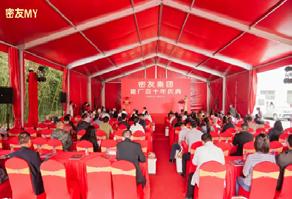
At the celebration, Wu Jianming, Chairman of Miyou Group, delivered a welcome speech, thanking all sectors of society for their long-term support and emphasizing that the group will continue to adhere to technological innovation and market development. At the event site, Miyou Group signed technical cooperation and industry-university-research agreements with the Shanghai Institute of Ceramics, Chinese Academy of Sciences, and the School of Materials Science and Engineering of Henan University of Technology respectively. Meanwhile, it reached a distribution cooperation with Henan Tiancan New Materials Technology Co., Ltd., further promoting the coordinated development of the industrial chain.
With the traditional fortune-opening gong ceremony, the atmosphere of the celebration reached a climax. In the future, Miyou Group will take the 40-year accumulation as the cornerstone, deepen innovationdriven development, and work with partners to embark on a new journey of high-quality development.
The Federation of Trade Unions of Zhengzhou High-tech Zone, in collaboration with Moku, has launched the "Overseas Acceleration" series of activities.
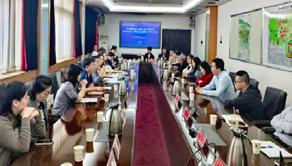
On April 16, the matchmaking meeting themed "Overseas Acceleration: Policy Dividends + Exhibition Shortcuts + Overseas Warehouse Codes", hosted by the Federation of Trade Unions of Zhengzhou Hightech Zone, was successfully held at the Management Committee of the High-tech Zone. As an important measure of the Zhengzhou Federation of Trade Unions to assist enterprises in going global in 2025, this event focused on the new materials industry and provided support for enterprises' international development.
Bai Ning, General Manager of Moku.com, focused on sharing the light-asset overseas development model of "exhibitions + overseas warehouses + local distribution" at the meeting. He pointed out that international exhibitions can quickly establish market awareness, while overseas warehouses can improve supply chain efficiency, forming a business closed loop from brand exposure to continuous sales. As a leading platform in the industry, Moku.com provides enterprises with full-chain services such as policy interpretation, exhibition participation strategies, and overseas warehouse layout, helping enterprises efficiently expand overseas markets.
The Federation of Trade Unions of Zhengzhou High-tech Zone stated that in the future, it will continue to join hands with professional institutions such as Moku to deepen the three-in-one model of "policy + resources + services" and promote the international development of enterprises. The successful holding of
Industry Information
this event marks a solid step taken by the High-tech Zone in empowering enterprises to go global. (Source: Moku)
The Institute of Metal Research, Chinese Academy of Sciences has made a breakthrough in diamond high-temperature solar-blind ultraviolet detectors.
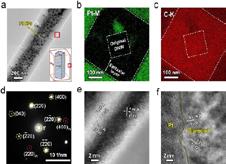
The research teams led by Sun Dongming and Huang Nan from the Institute of Metal Research, Chinese Academy of Sciences, have successfully developed a single-crystal diamond nanowire structure embedded with platinum nanoparticles, which significantly enhances the solar-blind ultraviolet detection performance of diamond in high-temperature environments. Combining the advantages of efficient carrier transport in nanowires, the plasmonic resonance effect of platinum nanoparticles, and the Schottky barrier, the device achieves a responsivity of 68.5 A/W under 220 nm ultraviolet light, which is 2,000 times higher than that of traditional diamond devices, with an ultraviolet/visible rejection ratio of 550. At a high temperature of 275°C, the responsivity further jumps to 3,098.7 A/W, and the stability is excellent.
This achievement provides new ideas for high-performance ultraviolet detectors in extreme environments, and the related research has been published in *Nano-Micro Letters*. (Source: Materials Science and Engineering)
Liaocheng breaks through the "bottleneck" technology of superhard materials, forging "industrial teeth" at 1500 ℃ high temperature.


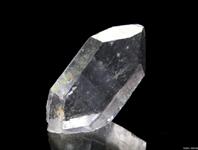
Recently, Zhongke Runjing, a national-level specialized, sophisticated, distinctive, and novel "little giant" enterprise, has successfully broken through the artificial diamond micropowder preparation technology. It has produced diamond micropowder with a perfection degree of 99.97% under the conditions of 1500 ℃ high temperature and 5.5GPa ultra-high pressure, breaking the foreign technological monopoly. Through intelligent transformation, the enterprise delivers more than 150,000 carats of special diamond products per month on average, and its 8-inch diamond heat sink can increase the heat dissipation efficiency of high-power chips by 300%.
At present, the enterprise is investing 50 million yuan to build an ultra-precision processing laboratory and jointly tackling CVD diamond thin film technology with the Chinese Academy of Sciences. It is expected that after the production starts in the third quarter, it will achieve an annual output of 12 million special diamond products, driving the industrial chain to add more than 1 billion yuan in output value. As a national top 100 city in advanced manufacturing, Liaocheng has cultivated 19 "little giant" enterprises that have broken through 12 "bottleneck" technologies. (Source: Liaocheng Daily)
Recently, Shandong Liaocheng Junrui Superhard Materials Co., Ltd. announced that its R&D team has successfully overcome the key technology of catalyst formulation for high-grade diamond synthesis. By innovatively adopting a composite formulation of Junrui Diamond breaks through the technical bottleneck of catalyst, achieving the localization of high - grade diamond.


non-metallic, metallic and rare earth elements, this technology has effectively solved the technical problem that traditional catalysts are difficult to simultaneously "reduce synthesis conditions" and "control growth rate" in the diamond synthesis process. It has successfully filled the domestic gap in the synthesis of catalyst powder for high-grade coarse-grained diamonds and realized self-sufficiency in new catalyst powder.
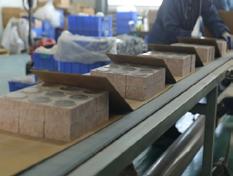
The project for cultivating diamonds and materials with an annual output of 2.8 million sets, invested 100 million yuan by the company, has entered the final commissioning stage and is expected to be fully put into production by the end of April. After the project is put into production, it is expected to achieve an annual output of 400 million carats of diamonds, with a total output value of 150 million yuan. (Source: Liaocheng High-tech Zone)
Harbin Institute of Technology has made a breakthrough in the key technology of 3D printing of high thermal conductivity diamond composite materials.
Recently, the Infrared Thin - film and Crystal Team of Harbin Institute of Technology published the latest research results in *Additive Manufacturing*. They successfully developed a new heterogeneous forming process for high - thermal - conductivity diamond composite materials based on the Binder Jetting (BJT) 3D printing technology.
The research first proposed the use of the
Gaussian Multimodal Fitting method (GMF) to establish a high - fidelity simulation model for the thermal debinding process, solving the technical problem of the unclear debinding mechanism in traditional BJT printing.
The study found that the use of Grayscale - based Binder Jetting Granular Printing (g - BJGP) technology can reduce the maximum monomer content during the thermal decomposition process to 1/10 of that in conventional printing, significantly reducing the risk of material contamination. This technology provides a new solution for the precision forming of high - thermal - conductivity composite materials such as diamond/ copper and diamond/silicon carbide, and is expected to be applied in high - performance heat - dissipation fields such as AI chips and new - energy vehicles.
Through multi - scale modeling and experimental verification, the research team established a complete theoretical system for process optimization, providing an innovative idea for solving the heat - dissipation problem of high - power electronic devices. (Source: Infrared Thin - film and Crystal)
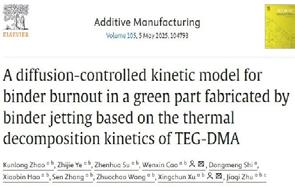
35 items in superhard materials category! Henan Province issues the 2025 science and technology development plan.
Recently, the Henan Provincial Department of Science and Technology issued the notice of the "Henan Province 2025 Science and Technology Development Plan".
Industry Information
The science and technology development plan includes the key - R & D special projects in Henan Province, the Henan Provincial Natural Science Foundation, the scientific and technological research projects in Henan Province, and the soft - science research in Henan Province. Among them, 35 items are related to super - hard materials.
These projects cover many aspects of the superhard materials industry, ranging from the manufacturing process of precision grinding tools to the exploration of cutting - edge semiconductor materials and devices. It is expected that they will achieve good results in practical applications and contribute to the development of the super - hard materials industry in Henan Province and even the whole country. (Source: China Super - hard Materials Network)


implemented, among which the superhard materials industry has attracted much attention. Shangqiu will rely on relevant R&D institutions to consolidate industrial advantages such as diamond micropowder processing, carry out forward-looking explorations, promote the construction of key projects, and improve the industrial chain of "raw and auxiliary materialssingle crystal synthesis - diamond products - diamond jewelry". It will support the construction of green energy diamond production and manufacturing bases and accelerate the building of a national advanced manufacturing cluster of superhard materials.
In addition, the plan clarifies work objectives, measures and safeguard measures, aiming to cultivate emerging industrial clusters, build a new engine for the modern industrial system, and promote the high-quality development of Shangqiu. (Source: Dahe Financial Cube) Shangqiu issues an action plan for cultivating and expanding emerging industries, with the superhard materials industry attracting attention.
As of April 16, the General Office of Shangqiu Municipal People's Government has issued the "Shangqiu Action Plan for Cultivating and Expanding Emerging Industries (2025 - 2027)", with 39 enterprises and 38 projects included in the lists of key enterprises and key projects respectively. Centering on key tasks, the plan puts forward four major actions and focuses on developing 13 industries.
In the field of new materials industry, an action to accelerate growth and expand scale will be


Overseas information
Highland launches a new edge grinding machine.
Recently, Highland has launched a new edge grinding machine, Rehnen SK-2. With its innovative design and powerful performance, this edge grinding machine sets a new standard in the field of edge grinding. Different from traditional models, the SK-2 is equipped with a full spindle swing system, which can maximize the use efficiency of sandpaper, extend the service life of abrasives, and continuously deliver high-quality and consistent grinding results.
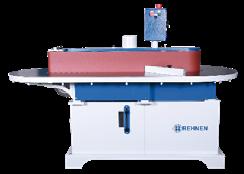
A major highlight of the SK-2 is its tabletop penetrating dust collection system, which can efficiently capture dust at the grinding point, keeping the workpiece clean and uninterrupted during the continuous grinding process on all four sides. (Source: https://www. woodworkingnetwork.com/product/sanding-and-finishing/ edge-sander-2)
Self-sharpening ceramic sanding discs achieve high efficient removal rate.
According to a report by The Fabricator on April 9, Walter has recently launched the XTRACUT XX sanding disc, which is designed to be suitable for various alloy materials, enabling efficient material removal while maintaining stable and consistent processing results.
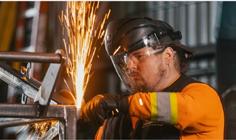
The sanding disc features a triangular ceramic abrasive grain design, which can maximize pressure distribution at each contact point. Walter stated that this design can shorten the operation time without applying excessive pressure and improve operational comfort.
The coolant works in synergy with the ceramic abrasive grains, helping to maintain cutting performance and extend the service life of the sanding disc. The coolant can significantly reduce heat accumulation, prevent overheating and material discoloration, and is especially suitable for processing hard alloy materials such as stainless steel or high-carbon steel. (Source: https://www.thefabricator.com/)
Steel pipe cutting tools achieve precise straight cutting.
According to a report by TPJ on April 9, Milwaukee Tool has recently launched the M18 FUEL ½ to 1 - inch steel pipe cutter and its matching ½ to 1 - inch steel pipe cutting blade, which are specially designed for cutting both installed and newly installed steel pipes.



The cutter adopts a linear drive cutting method, which ensures that the blade cuts into the steel pipe in a precise straight line, eliminating the trouble of manually controlling the blade angle. According to the manufacturer, the blade features a tungsten - carbide tooth design, and each blade can complete up to 200 cuts.
The built - in limiting device helps prevent overcutting in narrow spaces. For new pipes, the equipped foldable cutting baffle enables one - handed vertical alignment, ensuring right - angle cutting without the need for pipe wrenches to fix. (Source: https://www. thefabricator.com/)
Meller Optics has launched Microlux alumina polishing powder, which is used for grinding and polishing of optical materials.
According to a report by PRWeb on April 8, Meller Optics, Inc. recently announced the launch of a series of high-purity calcined alumina optical polishing abrasives. This series of products offers seven different particle size specifications and can be directly mixed with deionized water for use.

According to the report from PRWeb on April 8, Meller Optics, Inc. recently announced the launch of a series of high-purity calcined alumina optical polishing abrasives. This series of products offers seven different particle size specifications and can be directly mixed with deionized water for use.
Meller Microlux alumina abrasives are divided into two grades, with seven particle sizes ranging from 0.05 microns to 3.0 microns. They are Microlux-R and Microlux-RZ respectively: Microlux-R contains larger particles, which can quickly remove materials during initial grinding and polishing, and will gradually break down under pressure to achieve the final polishing effect; Microlux-RZ has undergone deagglomeration treatment, with a controllable particle size distribution, making it suitable for fine grinding and uniform polishing.
Meller Microlux alumina abrasives can achieve a scratch-pit surface precision of 10-5 grade on both hard and soft substrates, and are suitable for precision processing of various materials such as barium or calcium fluoride, germanium, silicon, sapphire, stainless steel, zinc selenide and zinc sulfide. Among them, the purity of Microlux-R is 99.98%, and that of Microlux-RZ is 99.99%.
(Source: https://www.prweb.com/)
Walter has launched a new ceramic grinding wheel for efficient metal grinding.

Recently, Walter Surface Technologies has launched the new FLEXCUT XX ceramic grinding wheel, which is specially designed for efficient grinding of steel, stainless steel and scale surfaces, and is suitable for flat and curved surface processing.
The grinding wheel adopts self-sharpening ceramic abrasives combined with SMART RESIN technology, which can expose new abrasive grains at the optimal time, thereby balancing sharpness and durability and achieving more stable grinding results.


The FLEXCUT XX grinding wheel is available in 4½ to 7 - inch specifications and adopts a Type 29 structure, which can maximize the contact area, reduce the number of grinding times, avoid material contamination and ensure precise grinding results. (Source: https:// www.thefabricator.com)
Teqram has launched the EasyGrinder grinding system to achieve automated precision grinding.
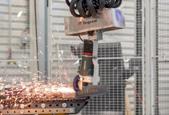
Recently, Teqram has launched EasyGrinder, an autonomous grinding system that can simplify precision grinding processes and integrate with automatic shot blasting systems. Equipped with 3D vision and an AIdriven controller, the system can handle thermally cut steel workpieces without the need for programming or pre-loaded geometric data. This makes it highly suitable for steel structure construction companies that often deal with custom designs or small-batch production.
EasyGrinder features a flexible tool system that can automatically adjust according to the needs of different workpieces. A chisel is used to remove slag, stacked sanding sheets or pen grinders are for edge rounding, angle grinders are suitable for cutting edge processing, and chamfering tools can finely process drill holes, ensuring efficient and precise grinding results. (Source: https://www.thefabricator.com)
BHP and Australian mining company Cobre have signed a $25 million exploration agreement.
Australian mining company Cobre announced on March 10 local time that BHP will provide up to $25 million (approximately A$40 million) in exploration funding for Cobre's Kitlanya West and East copper
projects in Botswana, and will have the right to acquire a 75% stake in the Kitlanya project. (Source: Jiemian News)
PEER Chain & Sprockets offers custom hole machining for gears and keyway services.
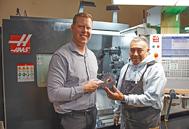
PEER Chain & Sprockets recently announced that it can provide custom hole machining services for any gear with an existing keyway, with delivery within a few days.
Ray, the company's machinist and CNC operator, has rich experience and specializes in industrial sprocket processing. Since it is necessary to ream holes in gears with existing keyways, traditional processing methods are prone to damage cemented carbide tools and affect the accuracy of hole diameters. PEER Chain & Sprockets adopts an optimized process to ensure high-precision processing and avoid such problems.
The company offers ANSI-standard finished bore and plain bore sprockets. The finished bore sprockets are equipped with a keyway and two set screws to ensure installation stability. To improve response speed, Ray is also training team members to accelerate order delivery. "Many customers have extremely high requirements for delivery time. We can complete the processing within one or two days instead of waiting for up to 20 weeks," Ray said.
PEER Chain & Sprockets has optimized inventory management and eliminated minimum order restrictions by purchasing special lathes. President Drew Beadle stated that the company can customize hole diameters of any size according to customer needs to meet market demands at a faster speed. (Source: https:// industrialsupplymagazine.com/)
Overseas information
Band saw blade technology suitable for cutting work-hardened materials.
According to a report by FABRICATOR on March 10, Bahco has launched SINEWAVE technology. By designing a ramp structure on the back edge of the band saw blade, this technology enables the band saw to exert greater cutting force without increasing the machine tool pressure, improves cutting penetration and speed, reduces heat accumulation, and extends the service life of the saw blade. The technology is applicable to bimetallic and carbide band saw blades, can be customized according to user needs, and is particularly suitable for cutting work-hardened materials such as highnickel alloys, Rene-type materials, superalloys and hightemperature alloys. (Source: https://www.thefabricator. com/)
Despite the improved efficiency of semiautogenous grinding mills, St Barbara has still lowered its full-year production forecast.
On March 10, Australian mining company St Barbara adjusted its production and cost expectations for the second half of the 2025 fiscal year, mainly due to the failure to achieve two key mining locations at its Simberi mine in Papua New Guinea, resulting in the average mining grade being lower than expected.
The gold production of the Simberi mine for the halfyear ending June 2025 is expected to be between 32,500 and 42,500 ounces, with the AISC (All-in Sustaining Cost) expected to be between A$3,400 and A$3,800 per ounce.
Despite the challenges, St Barbara has made progress in improving operational efficiency. The commissioning of the crusher and the adjustment of the semi-autogenous grinding (SAG) mill in January and February have enhanced equipment availability and processing capacity. In addition, the company has added two excavators and plans to introduce multiple Volvo AH60 articulated trucks in succession to improve the production efficiency of the mine. These production figures do not include the ongoing gold recovery from the decommissioning Touquoy processing plant in Nova Scotia, Canada.
St Barbara has lowered its gold production forecast


from the previous 65,000 to 75,000 ounces to 55,000 to 65,000 ounces. The full-year AISC forecast has also been adjusted accordingly to between A$3,900 and A$4,200 per ounce. Managing Director Andrew Strelein stated that the company continues to improve operational efficiency and expects the performance for the half-year ending June 2025 to improve, but set at the average mining grade, it is difficult for the company to achieve its initial target. (Source: https:// www.miningweekly.com/article/st-barbara-lowers-full-yearproduction-guidance-2025-03-10)
L&T's Mining & Metals Division has secured major contracts in the steel and alumina sectors.
According to a report by Machine Maker on February 22, the Mining & Metals (M&M) Division of Larsen & Toubro (L&T) recently announced that it has secured a significant contract from Indian aluminum company Hindalco. Under the contract, L&T will be responsible for building an 850,000-tonne-per-annum bauxite green project smelter in Odisha. The scope of the contract includes engineering, procurement, construction, and installation (EPC), which further strengthens L&T's position as a key partner in Hindalco's expansion plans.
The collaboration between L&T and Hindalco has spanned over three decades. As an EPC contractor, L&T has been involved in the construction of Hindalco's alumina, aluminum, and copper smelters.
D.K. Sen, a member of L&T's Executive Committee and Advisor to the President, stated: "The M&M Division has successfully delivered numerous steel plants and alumina refineries in India and the Middle East, whether they are greenfield projects or expansion and renovation projects. The new order reaffirms L&T's leadership in executing largescale EPC projects in the steel and alumina sectors, and reflects our commitment to engineering excellence and customer satisfaction."
L&T's M&M Division provides end-to-end EPC solutions ranging from mining, mineral processing, industrial products to material handling. Its Products Division offers costeffective solutions for industries such as mining, cement, steel, fertilizers, and ports, which consolidates L&T's reputation as a reliable partner in industrial infrastructure development.(Source: https://www.globalminingreview.com)


Look at those abrasive, abrasive tool and grinding enterprises with a century of history (Series 9)
The ninth installment of the series featuring century-old abrasive, abrasive tool and grinding enterprises is here. Thank you for your continued attention. Today, we will continue to delve into the history and heritage of these enterprises. The enterprises we are introducing today are Elbe Schleifmittelwerk, Kuhmichel, Persch, and Heger.
ElbeSchleifmittelwerk
Elbe Schleifmittelwerk GmbH & Co. KG is a medium-sized company based in the Stuttgart area of Germany with a history of over 100 years, specializing in the production of high-quality grinding tools.



A keen awareness of tradition and progress is the driving force behind the company's development; these two principles complement each other perfectly at ELBE. Decades of experience combined with modern production technologies give customers confidence in the quality of its products.

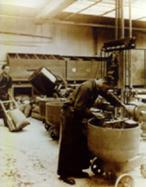


1889 An abrasive factory was established, starting small-scale production of bonded abrasives made from abrasive powder and other natural grinding raw materials.
1895 The first factory building was constructed on Austrasse in Bietigheim-Bissingen.
1899 Production facilities were expanded by acquiring an independent grinding mill, where raw materials were ground and sieved until 1930.
1939 A welfare fund was established, and an
Century-old Abrasives Enterprise
additional pension scheme was provided.
1955 Switched from ceramic furnaces to innovative gas-heated furnaces.
Around 1960 Suspended the production of simple types of grinding tools (such as grindstones). A strategic transformation took place in 1960, focusing on the production of high-quality precision grinding tools for modern grinding processes.
1965 An additional production line was added, starting the manufacturing of formed abrasives for roller and drum grinding methods.
1989 Celebrated the 100th anniversary of its founding.
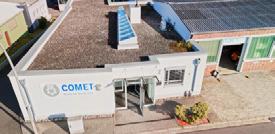
2016 Acquired by Comet Schleifscheiben GmbH.
2017 Newly developed and launched the Elbe CBN repairable grinding discs.
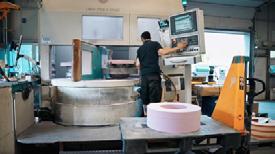
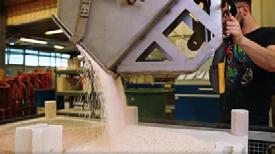


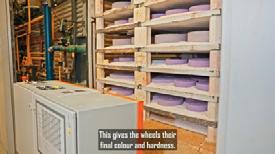
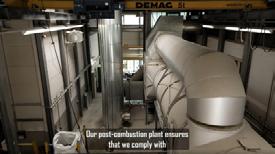
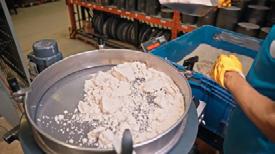
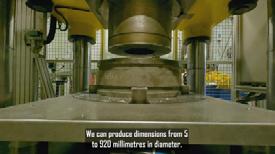
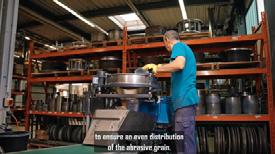


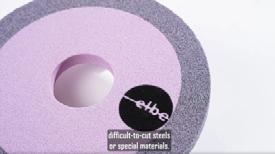
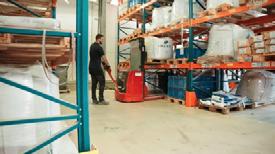

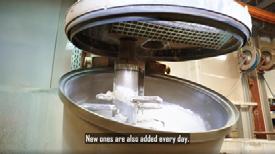
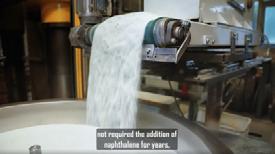
Kuhmichel
Kuhmichel was founded in 1880 and has always focused on a series of surface treatment processes such as sandblasting, grinding, and cutting – precisely because of this, the company boasts one of the most comprehensive product systems of sandblasting abrasives and grinding materials in the industry.
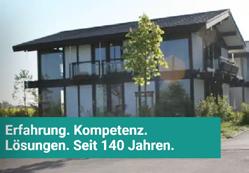
1880 Wilhelm Kuhmichel founded a company named after himself in Kandel, Rhineland-Palatinate, Germany. Leveraging the local mining industry, the company focused on blast furnace demolition operations and the sales of high-value refractory linings.
Since 1880, Kuhmichel has been committed to providing professional capabilities and innovative solutions – as a "leading European specialist wholesaler of blasting abrasives", Kuhmichel has its own production and recycling plants, offering customers professional all-round services.

Century-old Abrasives Enterprise
1982 Businessman Helmut Grundei acquired the company and changed its legal form to Wilhelm Kuhmichel GmbH. He keenly recognized that recycling would be the direction of future development.
1986 Dirk Grundei joined his father's company.
1994 Kuhmichel became the exclusive agent in Germany for MOTIM, a Hungarian high-purity corundum smelter.

1999 A sales company was established in Stafford, UK, named Wilhelm Kuhmichel GmbH, U.K. Branch.
2001 Wilhelm Kuhmichel GmbH was renamed Kuhmichel Abrasiv GmbH.
A subsidiary, Kuhmichel Abrasiv Austria GmbH, was founded in Tern, Austria.
A sales subsidiary, Kuhmichel Abrasiv B.V., was set up in Houten, the Netherlands.
2008 Kuhmichel took a stake in the South African stainless steel company SIGMA Stainless Steel (now known as SIGMA Wear Parts PTY Ltd.).
A sales subsidiary, Kuhmichel Abrasiv Hungária Kft., was established in Budapest, Hungary.
2009 A sales subsidiary, Kuhmichel Yüzey Islem Teknolojisi San. Tic. Ltd. Sti., was founded in Istanbul,


Turkey.
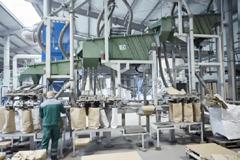
2011 Kuhmichel Recycling GmbH was established in Barenburg, Germany.
2012 Kuhmichel Recycling GmbH obtained the official business license.
2014 A Kuhmichel sales representative office was set up in Shanghai, China.
Since its founding, Kuhmichel has always attached great importance to environmental responsibility and actively practiced the concept of green environmental protection. We provide customers with a complete one-stop recycling and waste management service across Europe. The company is able to tailor efficient and sustainable resource recycling solutions for customers, and is responsible for waste transportation and disposal, helping customers achieve a winwin goal of environmental protection and economic benefits.

The company specializes in handling and recycling the following types of industrial solid wastes and residual materials:
- Residual blasting abrasives containing minerals and metals;


- Grinding wheel waste;
- Furnace demolition residues from the refractory materials industry;
- Ceramic and metal thermal spray powders (such as plasma spray powders);
- And dust generated during the abrasive manufacturing process.
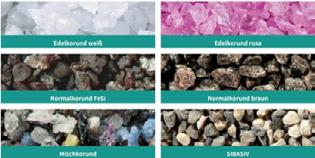
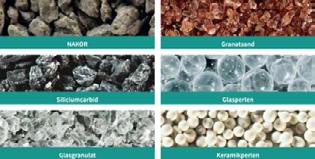
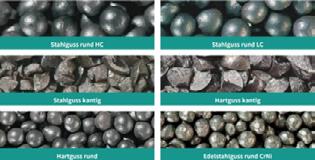
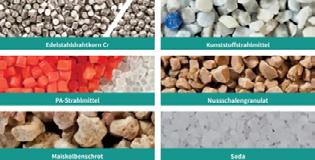
Century-old Abrasives Enterprise
The company's sandblasting abrasive recycling plant in Germany has an annual processing capacity of up to 40,000 tons, making it one of the largest sandblasting material recycling bases in Europe currently!
Kuhmichel Recycling holds all the legal qualifications for handling sandblasting waste and assists customers in preparing all the necessary compliance documents.


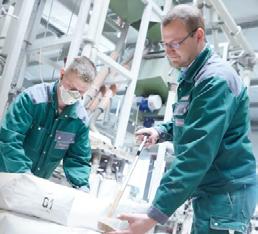
Century-old Abrasives Enterprise
The company works closely with logistics enterprises with professional transportation qualifications to be responsible for the full-process transportation of recyclable materials to the recycling center. The entire process maintains close communication with customers to ensure traceability and compliant operations.
After the material processing is completed, only a very small amount of non-recyclable residues will be generated, and this part will also be disposed of in a standardized and environmentally friendly manner. Through cooperation with Kuhmichel, customers can reduce thousands of tons of carbon dioxide emissions every year.

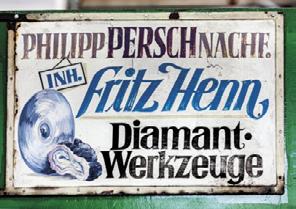
As a family-owned enterprise with four generations of inheritance, Persch has consistently provided diamond and CBN tools of reliable quality, boasting a history of 140 years to date. Personalized service has always been the core philosophy we uphold.


In 1885, the company was founded by master metal craftsman Philipp Persch in Idar-Oberstein. As one of the long-established industrial enterprises in the region, Phil. Persch Nachf. KG is rooted in this famous gemstone city.
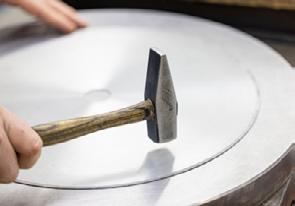
Since Mr. Philipp Persch had no children throughout his life, he designated his closest colleague, Rudolf Henn, as the heir to the enterprise, on the condition that the company name would continue to be "Philipp Persch Nachfolger" (Successor of Persch) in his memory.
In the 1950s, Fritz Henn, the son of Rudolf Henn, began to specialize in producing diamond cutting blades for local gem-cutting craftsmen.
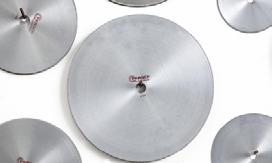
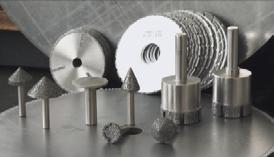
Persch


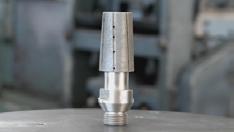
By 1965, the company's product line had expanded from tools originally only used in gem processing to electroplated saw blades, milling cutters and drills suitable for the plastics, glass and ceramics industries.
Since the early 1970s, Kurt Henn, the son of Fritz Henn, has been helping the company to further develop. Shortly afterwards, the company started the production of metal-bonded sintered tools.
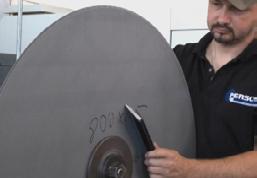
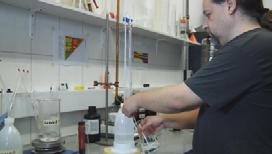
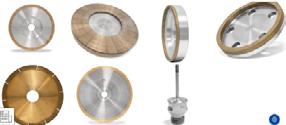
Century-old Abrasives Enterprise

In early 2003, the company relocated from the city center of Idar-Oberstein to a new factory building at Rothheck 16 in the Dickesbacher Weg industrial zone.
At the end of 2013, the company's legal form was changed to a limited partnership (Kommanditgesellschaft). Bert Henn, the son of Kurt Henn, joined the enterprise as a limited partner. Kurt Henn remained as the general partner and general manager of the company.
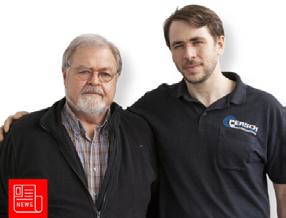
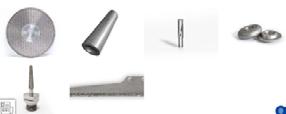
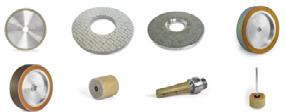
Century-old Abrasives Enterprise
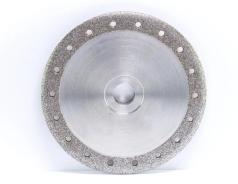




What is the company's market share in the plastics, glass and ceramics industries?
For over a century, Heger has been renowned in the industry for the outstanding quality of German manufacturing. Its diamond tools are widely used in construction, surface treatment, refractory materials and industrial fields.
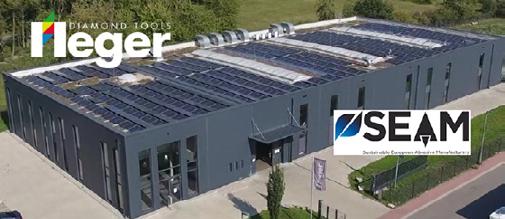
1908 Rudolf Heger founded the Heger-Hamedis diamond tool factory in Freiburg, specializing in the global sale of special saw blades. During the two World Wars, the company continued to produce and develop diamond saw blades and stone processing machinery. After the war, it relocated to Umkirch,
where the new factory focused on the research and development of diamond tools for the stone industry. In the 1960s, Heger was a pioneer in the application of sintering technology.
1991 Heger was sold to a private investor, and the business focus shifted to the construction industry.
Heger



1999 Heger moved to Hettersheim. 2001 Heger's European diamond tool company was acquired by the American corporate group ITW.


2004 Stefan Haag took over the management position.
2007 Günter Dreyer joined the company as an application engineer. In the following years, the company continuously improved the production processes and technologies of products for the construction industry.
2013 Heger separated from the American ITW Group and established a new company: "Heger –Excellent Diamond Tools by GD & SH". All employees were transferred to the new company. The production
of diamond segments, which had been outsourced to Belgium in 2007, was brought back to Hettersheim. The company also set up "Heger Excellent Diamond Tools B.V." in Hoogerheide, the Netherlands, to provide commercial and technical services for the Benelux market.
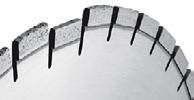


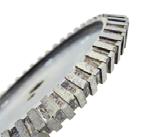
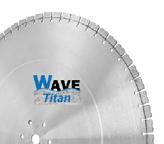
2015 Heger invested in the construction of a new factory building in Hettersheim, demonstrating its firm commitment to Germany as a business base. In July, it moved to the new production base in Hettersheim, Germany. The new base features higher production capacity and a more complete depth of production processes.
2016 Heger continued its rapid expansion. In 2016, we focused on the development and production of diamond segments for various applications. Therefore, we introduced more advanced equipment. The newly launched wall saws, floor cutting saw blades and new saw segment products have achieved remarkable success in the international market –which is one of the reasons for us to expand the sales team. "Made in Germany" remains the tenet we adhere to.
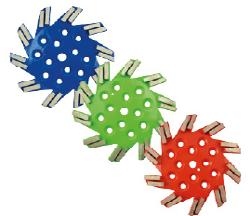
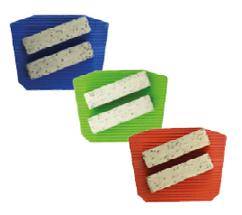
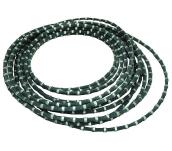
2018 1908-2018 | Heger has adhered to the concept of quality first for more than 110 years. The company celebrated its 110th anniversary in terms of local manufacturing in Germany, technological leadership and service commitment. Since its establishment in Freiburg in 1908, the company has continuously reached new heights through continuous product innovation and excellent services. To achieve flexible production and rapid delivery, Heger invests in the latest production equipment and technologies every year. 110 years of professional experience makes it trustworthy.
2019 Heger expanded its factory area to 8,000 square meters. To further increase production capacity and respond to customer needs quickly and flexibly, the company installed new laser welding machines for diamond saw blades.
2020 Heger joined the "Sustainable European Abrasives Manufacturers Alliance (SEAM)", committing to follow the three pillars of sustainable development and continuously improve in terms of the environment,


working conditions and production processes. The company installed a photovoltaic system, which can reduce carbon dioxide emissions by more than 100 tons every year. It is committed to creating sustainable jobs in Europe. At the same time, another new invention was made: the Titan Wave segment, which is used for diamond saw blades, came out.
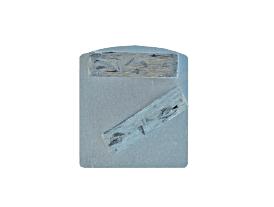

2021 Continued investment in manufacturing: new laser welding equipment for drill bits was added, grinding and sharpening equipment was replaced, and a new energy-efficient air compression system was installed. These measures are aimed at securing the company's future. Heger also launched the Titan Wave (diamond wave segment) product for drilling.
2022 A significant milestone: as of May 1, 2022, Heger officially became part of the Husqvarna Group. Heger's extensive and advanced product range, highly flexible production capacity, and short delivery times will further complement Husqvarna's existing product portfolio in the construction business in Central Europe. Sales activities were integrated into Husqvarna's organizational structure. The production base in Hettersheim continues to operate with ambitious growth plans in place.
2023 The production base located in Heitersheim, Germany, focuses on manufacturing segments and drill bits for heavy-duty users in the Central and Southern European markets. It continues to grow and has invested in new cold-pressing and hotpressing equipment. Approximately 30 employees work in around 1,800 square meters of production and administrative areas. The focus remains on producing high-quality diamond tools made in Germany.
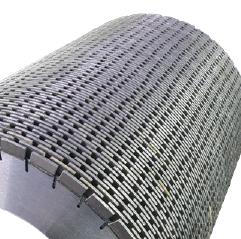


The Australian Hardware, Tools & Grinding Exhibition kicks off; ATGE2025 deepens China-Australia industrial cooperation
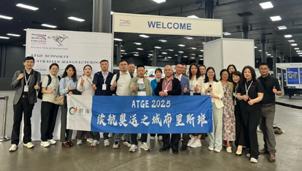
On April 29th, the 2025 Australian Hardware, Tools & Grinding Exhibition (ATGE) opened at the Brisbane Showgrounds. As Australia's first professional trade show focusing on abrasives, grinding tools, hardware, and tools, ATGE is co-hosted by Moku and the China National Hardware Association. It not only showcases the outstanding strength of Chinese manufacturing but also builds a bridge for in-depth cooperation between the Chinese and Australian manufacturing industries.
Enterprise Feedback: Overseas Warehouses Become a Focus of Cooperation
After the first day of the exhibition, many participating enterprises reported that the customers at this exhibition were highly professional, the visiting audiences raised precise questions, and the onsite exchanges were pragmatic and efficient. Some enterprises distributed all their promotional materials in a short time, gained several intended customers, and even some buyers directly expressed their intention to purchase samples. Through in-depth communication with local purchasers, exhibitors further grasped the specific needs of the Australian market in application fields such as woodworking and metal polishing.
In addition, Moku's overseas warehouse service in Australia has attracted extensive attention from
enterprises. Compared with the traditional trade model, overseas warehouses have obvious advantages in sample circulation, customs clearance and delivery, local fulfillment, etc. Many enterprise principals said that they will conduct in-depth docking with Moku after the exhibition to promote the accelerated launch of products and realize localized operations.

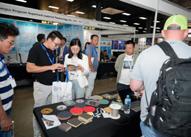

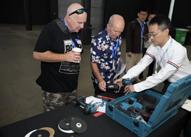


ATGE 2025: An "Accelerator" for China-Australia Industrial Cooperation
Against the backdrop of the restructuring of the global industrial chain, ATGE 2025 has been endowed with multiple strategic significances.
Since Moku established its Australian subsidiary, Abrasivestocks Australia, in 2023, it has successfully connected a number of Chinese abrasive and tool brands with Australian purchasers.
The products showcased at the exhibition, such as precision diamond tools, high-performance bonded abrasives, high-end coated abrasives, and professional hardware tools, will help the manufacturing industry in Queensland reduce production costs, improve processing efficiency, and form a complementary industrial cooperation model.
This exhibition publicly recruited Australian strategic partners and investment institutions for the first time, committed to establishing a long-term cooperation network integrating "technology + channels + brands" to achieve resource sharing and value co-creation.
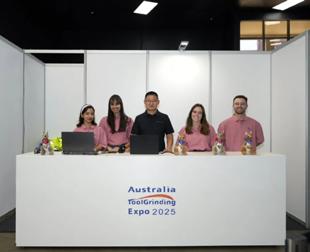

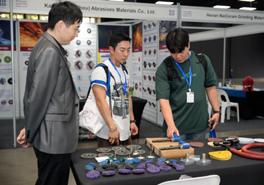

Faced with the complex and ever-changing international trade environment, more and more Chinese enterprises have realized that "exhibitions are just the starting point, and in-depth localization is the key".
Moku: Empowering Chinese Enterprises to Take Root in Australia
Against this backdrop, the full-chain localized service system of Moku's Australian company is becoming a "breakthrough solution" for enterprises to expand into the Australian market.
Moku has set up an overseas warehouse in Brisbane, which is like a "rear base" for enterprises in Australia, providing comprehensive services such as warehousing, logistics, collection and payment on behalf of others, solving the logistics problems of enterprises in overseas operations. At the same time, Moku also provides services such as brand promotion, market development, and agent recruitment to help Chinese enterprises achieve real "local operation".
As a member of the National Woodworking and Hardware Association and the Australian Stainless Steel Association, Moku integrates Chinese and Australian industrial resources to achieve accurate connection between upstream and downstream.
ATGE is not only an exhibition, but also a window, allowing more Chinese enterprises to see the real ecological environment of the Australian market, and enabling local Australian users to re-recognize the height and breadth of Chinese manufacturing. In the future, Moku will continue to promote the coconstruction, sharing and win-win of Chinese and Australian manufacturing industries with platform-based and professional services.
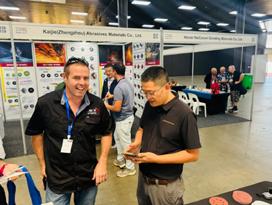


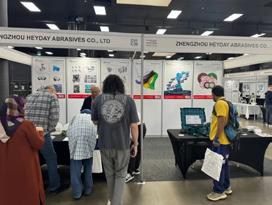
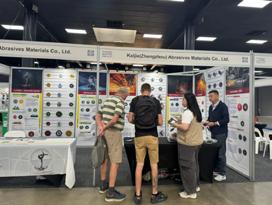
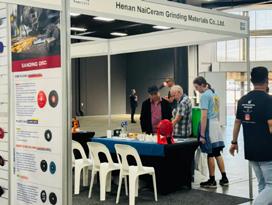


Moku Participates in Egypt's BIG5 Exhibition to Explore New Opportunities for Cooperation in the Middle Eastern Market
The 2025 Big5 Construct Egypt will be held at the Egypt International Exhibition Center from June 17 to 19. Moku enters the Middle Eastern market for the first time, aiming to "promote sales through exhibitions" via the exhibition platform and integrate its products into the local market system. In addition, Moku has reached a strategic intention with local partners. In the future, it will carry out market promotion with the help of their localized marketing network and provide efficient warehousing and logistics services for Moku's customers relying on the partners' well-established overseas warehouse layout.

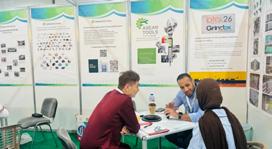
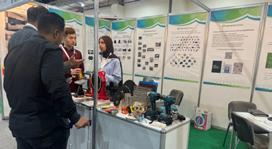
Exhibition Overview
The Big5 Construct Egypt has been successfully held for 26 sessions. Over the years, it has continuously integrated the entire construction value chain, gathering elites and leading enterprises from the global construction industry. As one of the most influential construction industry exhibitions in North Africa, this session is expected to attract more than 300 exhibitors from over 20 countries, with the number of professional visitors exceeding 20,000 and the exhibition area reaching more than 20,000 square meters. The exhibition not only provides a platform for exhibitors to display their latest products and technologies, but also creates valuable opportunities for business exchanges and cooperation among industry professionals.
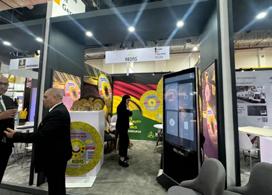
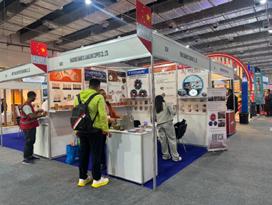


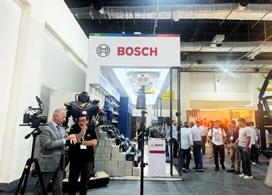
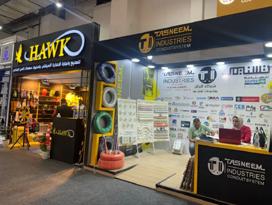
Market Opportunities
As Africa's third-largest economy, Egypt's construction market has reached a scale of 570 billion US dollars, and is expected to grow at a compound annual growth rate of 8.39% from 2024 to 2029. The Egyptian government plans to invest more than 100 billion US dollars in infrastructure construction, including large-scale projects such as the New Administrative Capital (55 billion US dollars) and the Ras Al-Hikma project (35 billion US dollars). At the same time, the accelerated urbanization process and the development of tourism have also brought an additional market demand of 2.56 billion US dollars to the construction industry.
Exhibition Scope
The exhibits of this exhibition cover the entire industrial chain of the construction industry, including building interiors and finishes, mechanical and electrical services, digital construction, doors, windows and facades, building materials, urban landscapes, construction equipment, green buildings, etc.

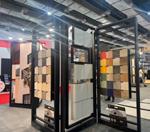


Exhibition Highlights
The 2025 Big5 Construct Egypt pays special attention to digital construction technologies and sustainable development solutions. Innovative technologies such as artificial intelligence and 3D printing will be the focus, while solar energy products and green building technologies will also attract extensive attention. The exhibition provides an excellent opportunity for participating enterprises to expand into the North African market, helping them establish direct contacts with local decision-makers and professionals. As a new member of the BRICS and an important member of COMESA, Egypt's increasingly open trade environment offers more investment opportunities for international enterprises.
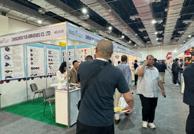



Go Global to North America, Focus on Global Metal Manufacturing – Moku Invites You to FABTECH 2025 Chicago Show!
FABTECH 2025, North America's largest-scale exhibition for metal forming, welding and surface treatment, will be held in Chicago, USA from September 8 to 11, 2025!

Moku to Showcase at FABTECH with an 182Booth, Inviting Joint Participation
At this year's exhibition, Moku will make an appearance with an 182 double-opening booth, which measures 3m × 6m, boasting an excellent location and eye-catching display effect.
Now, we are opening up opportunities for joint display on exhibition boards: Each board (90cm in width × 220cm in height) can showcase enterprise logos, product images, slogans, etc., and the boards will be uniformly designed and printed.
Cost: 24,000 RMB per board
Excellent enterprises are welcome to share this platform and make your brands quickly "stand out" in the North American market!
Moku's Group Exhibition Tour Officially Launches!
To help enterprises participate in the exhibition efficiently, Moku has specially launched the "FABTECH 2025 China Exhibition Group" service package, ensuring a worry-free exhibition experience for enterprises throughout the process!
The itinerary is 11 days in total, including the exhibition and business visits:
September 5: Gather in Hong Kong and fly to Chicago
September 6: Arrive in Chicago
September 7: Booth setup
September 8-11: Participate in the FABTECH exhibition
September 12-15: Travel to other cities in the United States for customer visits or inspections
September 16: Return to Shanghai or Hong Kong
Group tour fee: 38,000 RMB per person
The fee includes round-trip air tickets, exhibition registration, hotel accommodation (a surcharge is required for single rooms), vehicle transfers, meals, translation assistance, etc. A professional team will ensure an efficient and orderly


itinerary.
PS: The above arrangement is a tentative plan. If adjustments are needed, we will confirm with group members in advance, and any additional costs incurred will be borne by the participants; Moku reserves the right of final interpretation for the event.
About the Exhibition
The exhibition area of this year's FABTECH will exceed 79,000 square meters, and it is expected to attract more than 1,500 exhibitors from 40 technical fields and tens of thousands of professional visitors, making it the preferred platform for global manufacturing exchanges and cooperation.
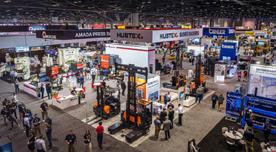
As a key barometer of the global manufacturing industry, FABTECH provides a "one-stop platform" that gathers worldleading enterprises in key fields such as metal forming, cutting, welding, and surface treatment. It is an ideal choice for you to explore new technologies, expand overseas markets, and connect with global buyers!
Abrasive and Grinding Tool Enterprises Gather to Continuously Expand Industry Influence
As an important support for metal manufacturing, many internationally renowned abrasive and grinding tool-related enterprises participated in this exhibition, showcasing products covering abrasives, grinding wheels, cutting discs, polishing products, sandblasting systems, grinding equipment, etc.
List of some participating abrasive and grinding tool enterprises:
3M、Abrasives Inc、Abrasivestocks、AKS Cutting Systems Inc、Anhui Advanced Grinding Tools Co.,Ltd.
Anxin Abrasives、BevelTools、Brodbeck Ironworks、Brush Research Manufacturing、CGW Abrasives
Changzhou Uni-Star International Co Ltd、Continental Abrasives、Continental Tool Group-APT/UT
DCM Tech Inc、Doringer Cold Saws、Ervin Industries、ESCO Tool、Fandeli Abrasives、Fladder
FLEX Power Tools、Flexovit USA Inc、Flow International、Fortress Abrasive Blast Systems
GMA Garnet(USA)Corp、Gruppo Itexa Srl、Hangzhou Xiangsheng Abrasive Machine Manufacturing Co.Ltd
Hangzhou Zhanqi Brush Co Ltd、Hanhang Abrasives、JBright Abrasives&Tools、Jia County Yihong Abrasives Co Ltd
Joysun Abrasives、Jun Shiau Machinery Co Ltd、Keying Abrasives、Kocour Company、LISSMAC Corporation
Marpol、Napoleon Abrasives、Norton Abrasives、OMAX Corp、Osborn、Pearl Abrasive Company、PFERD INC
RHODIUS Abrasives、SHANGHAI BASIC AIM ENTERPRISE CO.,LTD.、Sia Abrasives Inc USA
Suzhou Wanpo Grinding Material Co Ltd、Toyev Abrasives、Uneeda、United Abrasives Inc/SAIT
VSM Abrasives Corp、Walter Surface Technologies、Weber、Weiler Abrasives
Weldcote Metals


Introduction:
Trend Analysis and Prospect Forecast of the Superhard Materials Market (2025-2033)
According to MRU's forecast, the global superhard materials market will achieve significant growth from 2025 to 2033, with a projected compound annual growth rate (CAGR) of 8%. This round of growth is mainly driven by the following key factors:
Firstly, technological advancements in the field of materials science continue to break through the limits of hardness and performance, promoting the development of new superhard materials with better performance. This includes the continuous improvement of synthesis technologies, resulting in larger crystal sizes, higher quality, and more precise control of material properties.
Secondly, the growing demand for highperformance tools and equipment in various industries is a major catalyst for market development. The requirements for high precision and efficiency in the manufacturing process have promoted the widespread application of superhard materials in products such as cutting tools and grinding wheels.
Thirdly, the global emphasis on sustainable development and resource efficiency is also driving the market forward. Superhard materials can reduce waste and extend tool life, which is in line with environmental protection practices. For example, the use of superhard materials in cutting tools can significantly reduce material loss during machining, contributing to the construction of a circular economy.
In addition, the application of superhard materials in energy-saving technologies is constantly expanding. Their excellent hardness and wear resistance make them perform well in high-pressure applications in the renewable energy field, improving
the overall efficiency of energy and the performance of energy storage systems.
The superhard materials market is playing a key role in addressing global challenges, helping to optimize resources, improve manufacturing efficiency, and promote the wide application of advanced technologies.
Market Scope and Overview:
The global superhard materials market is expected to grow continuously at a CAGR of 8%.
The market covers the production and application of superhard materials, mainly including synthetic diamonds and cubic boron nitride (cBN). These materials are widely used in multiple industries such as stone and construction, abrasive manufacturing, tool production, and other special fields. The market scope includes everything from the synthesis and processing of materials to their integrated application in various tools and components.
Technological progress plays a key role in the entire industrial chain, profoundly affecting production processes, material properties, and overall performance.
From a global development perspective, the importance of this market is reflected in the following aspects:
- Promoting the progress of manufacturing technology and improving the precision, efficiency, and productivity of various industries;
- Enhancing the performance of tools and equipment, bringing cost reduction, efficiency improvement, and waste reduction;
- Driving the development and application of
Market Analysis
various high-end technologies.
The growth of the superhard materials market is closely related to global technological progress and the demand for high-precision and high-efficiency manufacturing. Its role in achieving material efficiency and reducing waste has further consolidated its position in the global economy.
Market Definition:
The superhard materials market refers to the commercial field covering the production, circulation, and application of materials with extremely high hardness and wear resistance.
Key components include:
- Raw materials: such as carbon, boron, nitrogen;
- Production processes: such as high-pressure high-temperature synthesis (HPHT), chemical vapor deposition (CVD);
- Main products: synthetic diamonds, cubic boron nitride, polycrystalline diamond compact (PDC);
- End-use products: cutting tools, grinding wheels, polishing materials, etc.
Core Terms:
- Synthetic diamond: Artificially synthesized diamond with extremely high hardness and excellent thermal performance;
- Cubic boron nitride (cBN): More stable than diamond at high temperatures, suitable for processing ferrous metals;
- Polycrystalline diamond compact (PDC): A composite material composed of numerous tiny diamond crystals;
- High-pressure high-temperature synthesis (HPHT): A common method for synthesizing superhard materials;
- Chemical vapor deposition (CVD): An important technology for preparing superhard coatings.
Understanding these terms is helpful for indepth understanding of market trends, technological progress, and competitive patterns.
Market Segmentation:


By type:
- Synthetic diamond: With its excellent hardness, thermal conductivity, and chemical inertness, it dominates the market. It is widely used in cutting tools and abrasive products. The optimization of synthesis processes has promoted cost reduction and efficiency improvement.
- Cubic boron nitride (cBN): It has better thermal stability than diamond at high temperatures and is widely used in processing ferrous metals. With the increasing demand for high precision in the metal processing industry, the CBN market continues to grow.
By application field:
- Stone and construction: Used for cutting, grinding, and polishing stone and concrete, greatly improving construction efficiency and precision. Benefiting from the growth of global infrastructure construction.
- Abrasives: Including grinding wheels, polishing pastes, abrasive films, etc., widely used in surface treatment in manufacturing and metal processing industries. Technological innovation and the development of special abrasives continue to drive market growth.
Market Driving Factors:
The key factors driving the growth of the superhard materials market include the continuous progress of synthesis and processing technologies, which make products have higher quality and better cost performance. In addition, the increasing demand for high-precision and high-efficiency processing processes in the manufacturing industry has promoted the continuous expansion of the application of superhard materials in cutting, grinding, and other fields. With the improvement of material performance requirements in advanced technologies and special fields, the penetration rate of superhard materials in high-end applications such as new energy, aerospace, and electronic manufacturing is constantly rising. At the same time, governments of various countries have also promoted industrial


innovation and sustainable manufacturing through policy support, further driving the development of the industry. Globally, the increasing environmental demands for resource utilization efficiency and waste reduction also contribute to the development of the superhard materials market.
Market Restraints:
Despite the broad prospects, the superhard materials market faces many constraints. First and foremost, the high production and procurement costs pose obvious entry barriers for small and mediumsized enterprises. Secondly, the global distribution of key raw materials is extremely uneven, leading to unstable supply chains in some regions. In addition, the process of synthesizing superhard materials is relatively complex, requiring high professional levels of technical equipment and operators, which further limits the popularization and rapid expansion of the industry.
Market Opportunities:
With the continuous advancement of technology, the superhard materials market is ushering in new development opportunities. These include the research and development of new materials with better performance, the application and improvement of surface modification technologies, and the breakthrough of low-cost and high-efficiency synthesis methods, all of which are expected to significantly improve material performance and reduce costs. At the same time, the potential applications of superhard materials in emerging fields such as advanced electronics, semiconductor manufacturing, and biomedicine are opening up a broader market space. The widespread dissemination of the concept of sustainable manufacturing has made the adoption of environmentally friendly and low-energy-consuming processes a part of enterprise competitiveness, which will further enhance the strategic position of superhard materials in the green manufacturing system.
Market Key Trends:
The current market shows several significant
development trends. Firstly, the new generation of superhard materials is evolving towards higher hardness, better thermal conductivity, and stronger chemical stability to meet more complex processing needs. Secondly, the rapid development of advanced manufacturing technologies, especially the wide application of additive manufacturing and 3D printing, provides technical support for personalized and efficient material production. The concept of green manufacturing is also profoundly affecting the direction of the industry, and enterprises are paying more and more attention to material recycling, production energy conservation, and process environmental protection. In addition, the wide application of superhard materials in highperformance electronic equipment, clean energy, high-end medical devices, and other fields is gradually opening up new market growth points.
Regional Market Analysis:
North America, with its mature industrial base and leading position in materials science, continues to occupy an important share in the global superhard materials market. The demand for high-performance materials in the high-end manufacturing industry in this region is growing steadily, which is the main market support. The European market is known for its strong manufacturing capacity and powerful R&D resources, and policies promoting high-tech manufacturing and green production also provide a good environment for market development. Due to the rapid industrialization process, especially the increasing infrastructure investment in China, India, Southeast Asia, and other countries, the Asia-Pacific region has become the fastest-growing market in the world. In contrast, although Latin America, the Middle East, and Africa have great potential, due to problems such as weak infrastructure, insufficient technical strength, and economic instability, market development is relatively lagging behind, and external investment and technology introduction are still needed to accelerate improvement.


Traditional grinding industry and non-grinding technology: Competition or complementarity?
Recently, according to a report by Business Wire, semiconductor materials company ChEmpower announced the completion of an $18.7 million Series A financing round. The company focuses on providing polishing pads and chemical solutions for planarization processes. The funds will be used to expand its technological scale in advanced chip manufacturing and packaging fields.
ChEmpower is reshaping semiconductor manufacturing processes through its abrasive-free planarization technology. The company's polishing pads and chemical solutions can achieve defect-free, high-flatness surface treatment, thereby improving chip yield and performance. Unlike traditional chemical mechanical planarization (CMP) technology, which relies on abrasives and often leaves scratches and residual particles, reducing yield and increasing costs, ChEmpower's technology simplifies the planarization process, lowers embedded costs, and enhances sustainability through water recycling –this is particularly crucial because the planarization process accounts for approximately 40% of water usage in fabs.
Dr. Sudhanshu Misra, co-founder and CEO of ChEmpower, stated: "The rapid development of artificial intelligence and the urgent demand for sustainable high-performance semiconductors have brought important opportunities to ChEmpower. With this round of financing, we will accelerate our
operational pace, expand market layout, optimize product portfolio, and ensure a leading position in next-generation semiconductor manufacturing."
As the demand for high-performance AI chips surges, challenges in manufacturing, bandwidth, and advanced packaging are escalating, especially against the backdrop of increasingly miniaturized chip sizes and more complex architectures. Currently, 40% of global wafer output is concentrated on nodes below 10nm. As nodes continue to shrink, more planarization steps are required to ensure performance. ChEmpower's abrasive-free technology plays a key role in advancing the production of chips below 10nm and enabling next-generation AI and high-end semiconductor applications.
Brief Comment:
ChEmpower's flagship "abrasive-free planarization" technology, which no longer relies on traditional abrasive methods, has shown obvious advantages in improving yield, reducing defect rates, and saving water and reducing emissions, especially suitable for advanced processes, AI chips, and advanced packaging fields.
This poses a challenge to traditional chemical mechanical planarization (CMP) technology but also provides an opportunity for the traditional grinding industry to transform and upgrade.
Coping Strategies for the Traditional Grinding


Industry
Technology Integration, Not Replacement: Abrasive-free technology does not completely negate the grinding process. The widespread application of traditional grinding processes in wafer manufacturing still has irreplaceable value, especially in terms of controllable costs, strong equipment versatility, and profound technical accumulation. However, transformation is needed in optimizing specific links (such as high-end chip manufacturing). Traditional grinding enterprises can explore the combination with abrasive-free technology, for example, still using grinding processes in the rough polishing stage, while introducing abrasive-free solutions in the fine polishing stage to form a complement.
Focus on Differentiated Markets: Abrasivefree technology currently mainly targets advanced processes (such as below 10nm), while traditional grinding still has wide applications in mature processes, packaging, memory, and other fields. The grinding industry can deepen into segmented markets and upgrade towards high precision and low damage.
Green Transformation to Reduce Environmental Costs: The water recycling and sustainability emphasized by ChEmpower are directions that the grinding industry can learn from. By improving the recycling of grinding fluids and reducing the waste of consumables, traditional CMP can also improve
environmental performance and meet the ESG needs of fabs.
Paths to Win-Win Cooperation
Industrial Chain Cooperation: Grinding material suppliers can cooperate with abrasive-free technology enterprises to develop new soft polishing pads, chemical liquid formulations, or modular equipment systems adapted to their processes, achieving technical extension rather than replacement.
Capital and Technology Linkage: Traditional grinding giants can layout in the abrasive-free field through investment or mergers and acquisitions to avoid being subverted by technology and accelerate their own innovation.
The technological iteration of semiconductor manufacturing will not stop, but the replacement of old and new technologies is often accompanied by integration rather than simple substitution. The traditional grinding industry needs to actively embrace changes, find new positioning in the innovation of "grinding +", and work with abrasive-free technology to promote the sustainable development of chip manufacturing.


Is low-cost bauxite coming? What impact will Alcoa's expansion plan have on China's alumina and corundum industries?
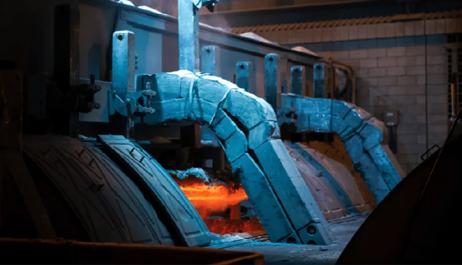
According to a report by Australian Mining on May 16, Alcoa Corporation is advancing the mining of high-grade bauxite in Western Australia as planned, with approval expected to be completed and mining to commence by 2027.
At the Bank of America Global Metals Conference held in Barcelona this week, Alcoa announced that this high-grade bauxite expansion project is crucial for its refineries. Once fully operational in 2027, the new mining area is expected to:
- Increase alumina production by approximately 1 million tons per year;
- Reduce the production cost of alumina by $15 to $20 per ton;
- Extend the operational life of the company's refineries in Western Australia.
"We still expect to obtain approval in early 2026," said Molly Beerman, Executive Vice President and Chief Financial Officer of Alcoa Corporation. "Once fully operational, it is expected to increase alumina production by approximately 1 million tons per year."
Alcoa performed strongly in the first quarter of 2025, completing a $1 billion debt issuance in Australia, primarily to repay existing debts.
Alcoa's refineries continued to perform stably, with global alumina shipments reaching 3.2 million tons in the first quarter of 2025.
Currently, Alcoa has three major facilities in Western Australia, including the fully operational Pinjarra refinery (with a capacity of 4.7 million tons),


Wagerup refinery (2.9 million tons) and Kwinana refinery (2.2 million tons).
In the 2024-25 fiscal year (FY25), the company produced 2.4 million tons of alumina and 600,000 tons of aluminum, with shipments consistent with production.
Beerman noted that alumina prices have stabilized at around $350 per ton, and production restrictions at Chinese refineries may further support prices.
"The tightness in the bauxite market has eased somewhat," she said. "Our customers say there are no problems with ordering now."
"In the first quarter of 2025, bauxite inflows into China from Guinea increased by approximately 35% year-on-year."
Alcoa is also continuing to communicate with the U.S. government in the hope of obtaining tariff reductions. Currently, the company is still affected by the 25% tariff imposed on aluminum and steel imports.
Brief Comment:
Alcoa's plan to start large-scale mining of highgrade bauxite from 2027 means that its alumina
production capacity will significantly increase and production costs will further decrease. This may put certain pressure on the global alumina supply pattern, especially against the backdrop of current production restrictions at some Chinese refineries, stricter environmental protection and relatively high costs. The increase in overseas low-cost resources will intensify market competition.
From the perspective of the corundum industry, as a downstream sector of alumina, Chinese corundum enterprises will face a situation where raw material prices may stabilize or even decline, which is beneficial to enterprises' cost control. However, if the price of imported bauxite stabilizes and supply is sufficient in the future, some alumina enterprises that rely on imports may gradually enhance their bargaining power, pulling down the profits of the entire industrial chain.
Overall, the short-term impact is limited, but in the medium to long term, China's alumina industry needs to be vigilant against the competitive pressure from foreign low-cost resources, while corundum enterprises need to pay close attention to fluctuations in upstream raw material prices to optimize procurement strategies and cost control capabilities.
Market Analysis


Consumption Trends of Tool Products in European and American Markets.
Tool products come in a wide range of types, including manual, electric, and pneumatic ones. They are widely used in fields such as gardening, construction, and maintenance, and can meet various usage needs in daily life and industrial production.
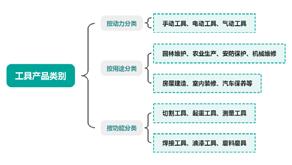
Categories of Tool Products
Classified by Power
Manual tools, Electric tools, Pneumatic tools
Classified by Application
Garden maintenance, Agricultural production,
Security protection, Mechanical repair
House construction, Interior decoration, Automobile maintenance, etc.
Classified by Function
Cutting tools, Hoisting tools, Measuring tools
Welding tools, Paint tools, Abrasive tools
In recent years, the global tool product market has shown a steady development trend.

1. The trend of electrification and lithium-ionization of tool products is becoming prominent, with the United States and Europe as core markets
From the perspective of product categories, electric products account for the highest proportion. On one hand, electric tools have replaced some traditional manual tools due to their high efficiency; on the other hand, the emergence of lithium-ion products has also enhanced the portability of electric tools, further deepening the penetration of electric products. In addition, OPE (Outdoor Power Equipment) products have also improved the safety and environmental protection issues of traditional fuel-powered products through lithium-ionization. With continuous technological progress, the performance of lithium-ion products is expected to be further enhanced.
From the regional perspective, the European and American markets account for as high as 77.6%. The popularity of DIY habits in European and American markets, along with high-frequency scenarios such as daily household maintenance, has driven strong consumer demand for tool products.
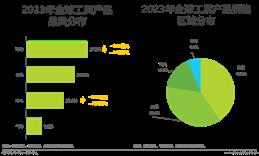
2. The demand for construction and maintenance, deepening DIY habits, and replacement needs in the United States have driven the growth rate of


the U.S. market to outpace the global average, with consumption levels expected to continue rising.
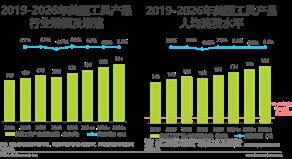
Key factors in U.S. procurement decisions
In the procurement decision-making process for tool products, U.S. buyers primarily focus on two key factors: price (63.6%) and quality (81.8%). Secondary factors include product innovation, customization capabilities, supplier reputation, and delivery time. Additionally, some buyers proactively take into account the compliance of both products and suppliers.

3. Europe is the world's largest market. With economic recovery, consumption tends to stabilize, and the market quality is relatively high.

Key factors in European procurement decisions In the procurement decision-making process for tool products, European buyers primarily focus on two key factors: price (68.4%) and quality (94.7%). Secondary factors include supplier reputation, delivery time, and customization capabilities. Influenced by these primary concerns, buyers' main challenge also comes from quality control (81.8%). Meanwhile, buyers consider that there are certain challenges in price negotiation, supply chain stability, and product diversity. This aligns with the trend where suppliers focus more on offline procurement channels and prefer to enhance the certainty and reliability of product quality through offline experiences and other methods. Under the influence of this trend, compared with the situation in the United States, European buyers are more eager for suppliers to provide more detailed product information and specifications to improve their procurement experience.
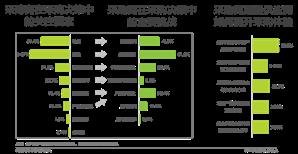
European buyers pay special attention to the environmental friendliness of products, while American buyers focus more on stable performance.
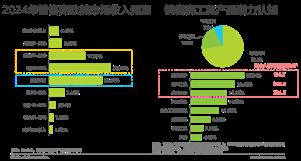
Market Analysis
4. Development Opportunities in European and American Tool Product Markets and Response Strategies for Chinese Enterprises
The European and American tool product markets are undergoing a structural upgrade centered on high added value, greenization, and intelligentization, presenting significant development opportunities for Chinese manufacturing enterprises. As global environmental awareness rises, lithiumion-powered tools are rapidly replacing traditional fuel-powered products in European and American markets. Particularly in gardening and construction sectors, demand for products such as cordless chainsaws and intelligent lawn mowers continues to grow. Meanwhile, the integration of the Internet of Things (IoT) and artificial intelligence is driving tool products toward intelligentization, with innovative products like electric wrenches with automatic torque adjustment and programmable welding robots gaining increasing market favor. Notably, European and American consumers show a distinct preference for high-end tool products, prioritizing durability, performance, and supporting service systems, with relatively lower price sensitivity.
China's manufacturing industry, backed by a comprehensive industrial system and strong supply chain capabilities, provides a solid foundation for the tool industry to participate in international competition. The latest statistics indicate that in 2024, China's total manufacturing output remained the world's largest, marking the 15th consecutive year of holding this leading position. Of particular note, the added value of high-tech manufacturing grew by 8.9% year-on-year, accounting for 0.6 percentage


points more of the total output value of industrial enterprises above designated size compared to 2023, demonstrating robust innovation momentum. The added value of equipment manufacturing above designated size increased by 7.7% year-on-year, contributing 46.2% to industrial growth. These figures fully confirm China's competitive edge in high-end manufacturing.
To seize the new opportunities in European and American markets, Chinese enterprises need to adopt more targeted development strategies. At the product level, they should continuously increase investment in technological innovation, focusing on developing high-value-added products aligned with market trends, such as lithium-ion and intelligent tools. In terms of market expansion, they need to leverage emerging channels like social media for localized marketing. Additionally, efforts must be made to strengthen brand building: by improving product quality and after-sales service, enterprises can change the traditional perception of "low price, low quality" and gradually establish a high-end brand image. Furthermore, enterprises should conduct indepth research into the usage habits and preferences of European and American consumers to ensure that product design, functional settings, and marketing strategies accurately match local market demands. Through these measures, Chinese enterprises are expected to achieve deeper penetration and higherquality development in the European and American tool product markets.


Analysis of Market Demand for Bonded Abrasives and Observations on Typical Regions
1. Market Size and Growth Trends
According to research by GRAND VIEW RESEARCH, the global bonded abrasives market reached $16.9 billion in 2024 and is expected to grow at a compound annual growth rate (CAGR) of 4.8% from 2025 to 2030. The main drivers of market growth come from the metal processing and automotive industries, where demand for efficient grinding, cutting, and polishing solutions continues to rise.
In the metal processing industry, bonded abrasives are widely used in manufacturing and maintenance processes, playing a crucial role especially in precision machining and automated production lines. In the automotive sector, as automobile production increases and demand for high-precision components rises, the application scope of abrasives in engine, transmission, and body manufacturing continues to expand. Additionally, growing demand in the construction and aerospace sectors is also driving market expansion. In the construction industry, bonded abrasives are used for surface treatment, polishing, and material forming; in the aerospace industry, high-precision grinding and finishing are essential to meet strict quality standards.
The research and development of environmentally friendly and high-performance abrasives are also important drivers of market expansion. With increasingly stringent environmental regulations,
manufacturers are developing low-dust, long-life, and high-efficiency abrasives to reduce environmental impact. Ceramic abrasives, cubic boron nitride (CBN) abrasives, and diamond abrasives have gradually become market mainstream due to their excellent durability and cutting performance. Furthermore, advancements in manufacturing technology and the popularization of industrial automation have led to wider application of bonded abrasives in computer numerical control (CNC) equipment and robot manufacturing, improving production efficiency and reducing reliance on manual labor.
2. Market Concentration and Characteristics
The global bonded abrasives market has a high degree of concentration, with several international enterprises holding large market shares. Technological innovation in the industry is active; driven by advancements in materials science, automation, and precision engineering, enterprises are continuously developing more efficient and durable abrasive products. In particular, the application of superabrasive abrasives is expanding, and mergers, acquisitions, and strategic cooperation among enterprises are becoming increasingly frequent to enhance technological strength and expand market layout.
Meanwhile, regulatory policies have a profound impact on the market. Environmental regulations and occupational safety standards have prompted
Market Analysis
manufacturers to improve production processes, such as reducing silica content in abrasives to lower dust emissions. Although coated abrasives and non-woven abrasives exist as substitutes in some applications, bonded abrasives remain irreplaceable in high-precision grinding and cutting fields due to their efficiency, precision, and durability.
3.
Product Type Analysis
Grinding wheels are the most dominant bonded abrasive products in the market, accounting for 51.27% of the market share in 2024. With the development of industrial automation, the application of grinding wheels in high-efficiency processing and strict tolerance control fields continues to grow, especially in metal processing, automotive, aerospace, and construction industries. Superhard grinding wheels, such as diamond and CBN wheels, are becoming core tools in precision manufacturing due to their fast cutting speed and long service life.
Polishing wheels are expected to grow at a CAGR of 5.1% in the next few years. The increasing demand for high-precision surface treatment in the automotive, aerospace, metal processing, and electronics industries has made high-performance polishing wheels a key tool. The popularization of automated manufacturing technology has further boosted the market demand for polishing wheels.
4. End-User Analysis
In 2024, the automotive industry was the largest end market for bonded abrasives, accounting for 40.87%. With the development of the automotive manufacturing industry in emerging economies,


demand for precision machining and highperformance surface treatment has increased significantly. Additionally, the popularity of electric vehicles (EVs) has driven demand for processing lightweight materials such as aluminum alloys and composite materials, thereby increasing the use of high-precision abrasives.
The aerospace industry is expected to grow at a CAGR of 5.0% during the forecast period. Due to the extremely high precision requirements for aerospace components, bonded abrasives play a key role in processing titanium alloys, composite materials, and high-temperature alloys. Growth in the production of commercial and military aircraft, as well as rising demand for maintenance, repair, and overhaul (MRO), has further driven market growth.
5. Regional Market Analysis
**North America Market**
The North American bonded abrasives market is driven by precision manufacturing and automation technology. Strong demand from the aerospace and defense industries has increased the application of abrasives in turbine blade processing and aircraft maintenance. Meanwhile, the promotion of 3D printing and advanced CNC equipment has also boosted demand for high-performance abrasives. Growth in the automotive industry, particularly the development of electric vehicles (EVs) and autonomous vehicles, has driven demand for precision grinding and surface treatment.
**U.S. Market**
The United States is the largest consumer of


bonded abrasives in North America, with the market influenced by investments in industrial automation and digital manufacturing. Demand for abrasives in the aerospace industry remains stable, while the rapid expansion of the electric vehicle industry has driven demand for abrasives in battery production, lightweight material processing, and semiconductor manufacturing. The advancement of infrastructure construction has also become an important growth driver for the market.
**Asia-Pacific Market**
The Asia-Pacific region accounted for 54.31% of the global market share in 2024, with China and India as the main growth engines. Rapid industrialization, accelerated infrastructure construction, and the development of the automotive and electronics industries have led to sustained growth in demand for high-precision bonded abrasives in the region. Policies such as "Make in India" and "Made in China 2025" have further promoted the development of local manufacturing.
**Chinese Market**
As the world's largest producer and consumer of bonded abrasives, China's market growth is mainly driven by the expansion of manufacturing, construction, and metal processing industries. The dominant position of steel production has increased demand for abrasives, while the rise of the new energy vehicle industry has boosted demand for high-precision abrasives in battery production and lightweight material processing. Additionally, the government's support for technological self-sufficiency strategies has enhanced the competitiveness of the high-end abrasive market.
**European Market**
The European bonded abrasives market is influenced by strict industrial and environmental regulations, driving the transformation toward sustainable and high-performance abrasives. The automotive industries in Germany, France, and Italy are major drivers of the market, particularly in lightweight materials, electric vehicles, and precision engineering fields. These industries have driven demand for efficient abrasives, especially in surface treatment and precision cutting applications in automotive production. Meanwhile, the aerospace and defense industries also have a significant impact on demand for bonded abrasives, particularly in highprecision component processing. Additionally, the construction industry's focus on green buildings and energy-efficient designs has promoted the use of abrasives in concrete, glass, and tile processing.
**German Market**
As a global industrial power, Germany holds a significant market share in advanced manufacturing, automotive, and aerospace industries. Strong market demand from global automakers such as Volkswagen, BMW, and Mercedes-Benz has promoted steady growth in demand for high-precision grinding, polishing, and surface treatment tools. Meanwhile, the machinery manufacturing and metal processing industries, as the core of the German economy, have further driven demand for abrasives. Germany's aerospace industry, particularly Airbus, has seen growing demand for bonded abrasives in turbine blade and composite material processing. Additionally, Germany's leading position in medical technology has driven demand for bonded abrasives in the manufacturing of high-precision surgical
Market Analysis
instruments and prosthetics.
**Central and South America Market**
Growth in the Central and South American bonded abrasives market is mainly driven by the expansion of the automotive and metal processing industries in countries such as Brazil, Mexico, and Argentina. As the degree of manufacturing automation increases, demand for highprecision abrasives is gradually rising. Growth in construction and infrastructure, particularly driven by government investment, has accelerated market development. Meanwhile, the oil and gas industries in Brazil and Venezuela have strong demand for pipeline maintenance and metal surface treatment, also driving growth in the bonded abrasives market. Increased foreign direct investment (FDI) has promoted the development of industrial manufacturing, further enhancing market competitiveness.
**Middle East and Africa Market**
The regional market is mainly driven by largescale construction projects and the oil and gas industry. For example, Saudi Arabia's "NEOM" plan and the United Arab Emirates' smart city construction have positively impacted demand for bonded abrasives. As the economic pillar of the region, the oil and gas industry has driven widespread application of bonded abrasives in pipeline maintenance and drilling operations. Additionally, manufacturing in Egypt, South Africa, and Turkey


has driven growth in demand for the abrasive market. With the popularization of automation technology and the widespread use of industrial machinery, demand for high-precision abrasives in the metal processing industry continues to rise. Investments in infrastructure by African economies have also accelerated the use of bonded abrasives in construction-related applications.
Conclusion
The global bonded abrasives market is in a stage of steady growth, driven by demand from multiple industries and regions. With the strengthening of environmental regulations and advancements in automation technology, research and development of high-performance and sustainable abrasives will become the focus of future industry development. Meanwhile, rapid industrialization in emerging markets and the development of high-end manufacturing will further promote market expansion, bringing more growth opportunities to the industry.


The global steel shot and steel grit market is stepping into the next growth cycle, and it is expected to reach 16.8 billion U.S. dollars by 2032.
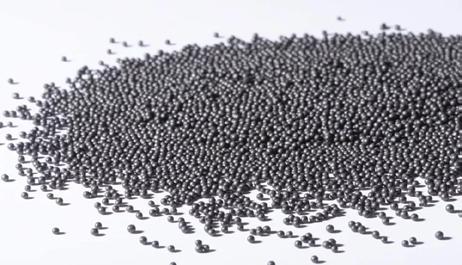
With the recovery of the global manufacturing industry and the acceleration of infrastructure construction, the metal abrasive industry is ushering in a new round of growth. According to the latest research data released by HTF Market Intelligence, the global steel shot and steel grit market is steadily expanding at a compound annual growth rate of 6.8%. It is expected that the market size will increase from $9.5 billion in 2025 to $16.8 billion in 2032, showing a strong growth momentum.
As the most common steel abrasives, steel shot and steel grit are widely used in industrial processes such as surface treatment, shot peening, casting cleaning, rust removal, etching, and surface texture processing, covering almost multiple fields from automobile manufacturing, construction, aerospace to shipbuilding and casting. Compared with traditional
one-time non-metallic abrasives, steel abrasives, due to their excellent durability and recyclability, can not only be reused hundreds of times to reduce long-term use costs, but also are favored by more and more industrial users for their environmental protection properties.
From the perspective of regional distribution, the Asia-Pacific region remains the main consumer market for steel shot and steel grit in the world. The continuous industrialization of China, India, Japan and other countries provides strong momentum for the market. At the same time, the Middle East and African markets show strong growth potential. Infrastructure investment and manufacturing development are driving the rapid growth of local demand for surface treatment materials, becoming the next growth highland concerned by the industry.
Market Analysis
With the continuous improvement of requirements for product performance and service life, the steel shot and steel grit industry is moving towards a more refined and technical competition stage. From material optimization, particle size control to hardness adjustment, enterprises are promoting R&D iteration with the goal of improving the consistency and adaptability of abrasives. In addition, the popularization of automated sandblasting systems has also put forward higher standards for abrasives in terms of particle shape stability and shatter resistance, promoting the industry to evolve towards the direction of "customization + high efficiency".
The overall trend of the industry also shows a high emphasis on environmental protection. More and more manufacturing enterprises tend to choose reusable steel shot and steel grit to reduce industrial dust emissions and waste disposal pressure. Some leading enterprises have also begun to adopt recycled steel, low-carbon smelting and other methods on the production side to promote the leap of product green attributes, forming a closedloop system of "green raw materials - low-carbon manufacturing - recycling".
Of course, the market also faces many challenges: fluctuations in raw material prices directly affect cost control; the high energy consumption in the production process puts pressure on environmental compliance; and the competition from new entrants and alternative materials (such as garnet, aluminum oxide, etc.) is


also increasing market uncertainty. In this pattern, enterprises not only need to continuously improve product performance, but also achieve systematic optimization in management, procurement, technical collaboration and other aspects.
From a macro perspective, there are many factors affecting the trend of the steel shot and steel grit industry. At the policy level, changes in trade relations and environmental regulations may bring export barriers or cost pressures; economically, interest rates, exchange rates and the pace of industrial investment are directly related to market vitality; and the technical dimension determines whether enterprises can make breakthroughs in highend application markets, especially in the "special abrasive" demand in aerospace, military and other fields. Whoever masters the core formulas and processes can seize the commanding heights of the industry.
It can be predicted that in the next few years, the steel shot and steel grit industry will continue to expand against the background of "global manufacturing + green transformation". Whoever takes the lead in transforming from traditional mass production to high-value-added customized manufacturing is likely to stand out in the global market and become a key force in this round of industry upgrading.


Analysis of China's Hand Tool Interchangeable Head Accessories Market: Scale Forecast and Trend Insight
Market Forecast
As China's demand for interchangeable accessories for hand tools continues to rise, the market consumption is expected to maintain a growth trend over the next decade. According to IndexBox's forecast, the market sales volume will grow at an average annual rate of 3.5%, reaching 823,000 tons by 2035. In terms of value, the market size is projected to increase at an average annual rate of 3.7%, reaching $9 billion by 2035 (at nominal wholesale prices).
Consumption Situation
In 2024, China's consumption of interchangeable head accessories for hand tools was 562,000 tons, basically the same as the previous year. From 2013 to 2024, the average annual growth rate was 1.5%, with little overall fluctuation and a relatively stable growth trend. Among them, the growth was relatively fast in 2018, reaching 4.4%. The consumption volume hit a historical high in 2024, and is expected to continue to grow moderately in the short term.
In 2024, the total market revenue of such tools dropped to $6.1 billion, a decrease of 3.9% compared with the previous year. This data is the sum of the revenue of manufacturers and importers, excluding costs in terminal links such as logistics and retail. From 2013 to 2024, the market as a whole maintained a relatively stable trend. It reached a historical peak of $6.3 billion in 2023, and slightly declined in 2024.
Production Situation
China's output of interchangeable head accessories has increased for the 12th consecutive year, rising by 6.2% year-on-year to 998,000 tons in 2024. From 2013 to 2024, the average annual growth rate was 4.1%, with a cumulative increase of 56.1%. Among them, the growth was the fastest in 2021, reaching 12%.
Based on export prices, the output value reached $10.8 billion in 2024. During this period, the total output value grew at an average annual rate of 3.2%, with a stable growth rhythm. The growth was the most significant in 2021, reaching 14%.
Import Trade
In 2024, China's imports of such tools increased by 26% year-on-year to 34,000 tons, achieving growth for the second consecutive year and ending the previous four-year downward trend. Nevertheless, the overall trend remains downward. The import peak was 77,000 tons in 2015, and has hovered at a low level since then.
In terms of value, imports slightly increased to $1.1 billion in 2024, but still showed a slight overall downward trend. It once reached a peak of $1.8 billion in 2018, but failed to recover growth thereafter.
Major Import Sources
In 2024, Germany became China's largest supplier with an export volume of 13,000 tons, accounting for 37% of China's total imports; followed
Market Analysis
by Japan (5,600 tons) and Taiwan, China (5,500 tons).
In terms of value, Germany ($353 million), Japan ($242 million) and Taiwan, China ($139 million) ranked the top three, with South Korea, the United States, Thailand, Vietnam, Sweden and Spain following, accounting for the remaining 19% in total. Among them, Vietnam's import value grew at an average annual rate of 32.9%, making it the fastestgrowing country.
Import Prices by Country
In 2024, the average import price of such tools in China was $32,029 per ton, down 17.8% yearon-year. Despite price fluctuations in recent years, the overall level remained relatively stable. It once reached a peak of $48,884 per ton in 2022, and declined slightly in 2024. By country, Spain had the highest price ($66,644 per ton), and Vietnam had the lowest ($12,815 per ton).
Export Performance
In 2024, China's export volume of such tools was 470,000 tons, rebounding for the first time since 2021 and ending the two-year consecutive decline. The overall exports showed steady growth, with the largest increase in 2017 (+26%). Exports are expected to maintain a growth trend in the future.
In 2024, the total export value increased to $5.1 billion. From 2013 to 2024, the average annual growth rate was 6.2%, showing a strong growth momentum, especially with a 26% increase in 2021. By 2024, the export value hit a historical high.


Major Export Destinations
The United States (61,000 tons), Russia (36,000 tons) and Germany (28,000 tons) were the top three export destinations for such tools in China, accounting for 27% of the total. India, Mexico, Vietnam, Brazil, Thailand, Japan, the United Kingdom, Canada, etc., also ranked among the top, accounting for 30% in total.
From 2013 to 2024, Vietnam had an average annual growth rate of 21.8%, making it the fastestgrowing market.
In terms of export value, the United States ($786 million), Russia ($398 million) and Germany ($348 million) ranked the top, accounting for 30% of the total; followed by Mexico, India, Vietnam, Japan, Thailand, the United Kingdom and Canada. Among them, Vietnam stood out with an average annual growth rate of 13.8% in export value.
Export Prices
In 2024, the average export price of China's interchangeable tools was $10,747 per ton, down 5.9% year-on-year. The overall price has slightly declined since the peak in 2014 ($12,247 per ton). There was a rebound in 2022 (+7.5%), but the overall trend was slightly downward.
By export country, the United States had the highest price ($12,810 per ton), and Brazil had the lowest ($7,852 per ton).


Changes in Demand and Challenges of the Abrasives and Grinding Tools Industry Under the Development Trend of the Foundry
Industry
I. Overview of the Development of the Foundry Industry in 2024
According to the latest industry research data, the foundry industry maintained steady growth in 2024, mainly driven by factors such as global economic recovery, promotion of environmental policies, and technological innovation.
Growth in Global Foundry Output Value
The foundry industry is a huge basic manufacturing sector, covering multiple fields such as automotive, aerospace, machinery, and energy. According to reports from several industry research institutions (e.g., Statista, Grand View Research), the global total output value of the foundry industry in 2024 was approximately between 400 billion and 500 billion U.S. dollars, with a certain degree of growth compared to 2023. This growth is mainly due to the recovery in demand from the automotive industry and heavy machinery manufacturing, especially in China, India, and Southeast Asia, where demand has increased significantly.
Promotion of Green Foundry Technologies
According to data from the Global Foundry Environmental Protection Index, a proportion of foundries worldwide began to adopt low-carbon foundry technologies in 2024, which was higher than that in 2023. It is expected that this proportion will continue to increase by 2025, mainly driven by stricter environmental policies and the pressure from rising global carbon emissions and energy costs.
Application of Automation Technologies
According to data released by the International Federation of Robotics (IFR), the penetration rate of automation applications in the foundry industry reached 25% in 2024, and this figure is expected to continue to rise by 2025, with the popularization of automated production lines. The application of automation technologies will improve the efficiency and precision of foundry production, thereby increasing requirements for abrasives and grinding tools.
II. Specific Demand Changes and Challenges in the Abrasives and Grinding Tools Industry
Strong demand for high-performance abrasives and grinding tools: High-end casting processing has put forward higher requirements for the performance of abrasives and grinding tools, such as higher hardness, wear resistance, precision, and stability. For example, in the aerospace field, the wide application of difficult-to-process materials such as titanium alloys and superalloys will drive the growth in demand for high-performance ceramic abrasives and superhard abrasives (e.g., diamond, cubic boron nitride).
Green and environmentally friendly abrasives and grinding tools become mainstream: Foundry enterprises are increasingly demanding environmentally friendly abrasives and grinding tools. For instance, environmentally friendly products such as water-soluble abrasives, biodegradable abrasives, and low-dust abrasives will be more favored by the market. In addition, environmental issues in the
Market Analysis
production process of abrasives and grinding tools will receive more attention, and enterprises need to strengthen environmental governance to reduce pollutant emissions.
Customized service capabilities become core competitiveness: Different foundry processes have significantly different performance requirements for abrasives and grinding tools, so enterprises need to provide customized solutions according to customer needs. For example, for the surface treatment of large castings, it is necessary to develop efficient and stable grinding tools; for the processing of precision castings, it is necessary to provide high-precision and low-damage abrasives and grinding tools.
Huge market potential for intelligent grinding equipment: With the improvement of the intelligence level in the foundry industry, the demand for automated and intelligent grinding equipment will continue to grow. For example, robotic grinding systems, online detection systems, and intelligent grinding software will become important development directions of grinding processing in the future.
III. Looking ahead to 2025, the foundry industry will show the following development trends:
Green foundry is imperative: As global environmental policies become stricter, the foundry industry is facing huge pressure to reduce emissions. Take China as an example, the "14th Five-Year Plan for Industrial Green Development" clearly proposes to take industrial carbon reduction as one of the core tasks of industrial green development during the "14th Five-Year Plan" period, promoting the green


transformation of traditional industries. This will drive foundry enterprises to adopt environmentally friendly raw and auxiliary materials, clean production technologies, and efficient pollution control facilities.
Accelerated penetration of intelligence and digitalization: Intelligent manufacturing and digital technologies are reshaping the production mode of the foundry industry. The application of technologies such as intelligent foundry factories, digital workshops, and 3D printing will significantly improve production efficiency, reduce production costs, and enhance product quality.
Continuous growth in demand for high-end castings: With the rapid development of highend equipment manufacturing industries such as aerospace, new energy vehicles, and rail transit, the demand for high-end castings will continue to grow. Take new energy vehicles as an example: in 2024, China's new energy vehicle sales reached 12.866 million units, a year-on-year increase of 35.5%, which will lead to a substantial increase in demand for lightweight, high-strength, and high-precision castings.
Further improvement in industry concentration:
Under the dual effects of environmental pressure and market competition, small and medium-sized foundry enterprises will accelerate their withdrawal from the market, and the industry concentration will be further improved.


Raw material price trends
Overview of China's bauxite, alumina and corundum markets in the first half of 2025.
Overview of China's Bauxite, Alumina and Corundum Markets in the First Half of 2025
I. Bauxite Market
1. Market Review for the First Half of 2025
The average price of China's domestic bauxite market in the first half of 2025 was 551.4 yuan/ton, an increase of 61.1 yuan/ton compared with the average price in the first half of 2024, up 12.46% year-onyear. Among them, the lowest monthly average price appeared in June, with the average price in June standing at 489.8 yuan/ton. The highest monthly average price was in January, with the average price in January reaching 613.8 yuan/ton. The average price range of China's bauxite market in the first half of 2025 was 480-615 yuan/ton. The average price trend of the market in the first half of 2025 showed a successive downward trend. As of June 30, 2025, the ex-tax daily average market price of domestic ore remained at 487.2 yuan/ton.
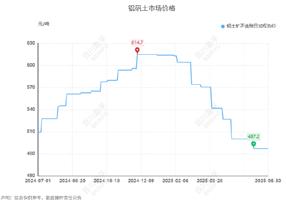
In terms of domestic ore in the first half of 2025, the price center showed a successive decline. Since the start of 2025, the price of downstream alumina has entered a downward channel, and profit margins have been continuously squeezed. To reduce production costs, alumina plants have successively
lowered ore purchase prices, resulting in the stop of the rise and the turn to a fall in the market price of domestic ore. The situation of domestic ore supply shortage in the first half of 2025 did not improve significantly. At the end of the first quarter, although there was an expectation of resumption of production in Shanxi and Henan in northern China, there was no substantial progress. Moreover, subsequent countylevel municipal governments successively carried out work related to the three-year action for tackling the root causes of non-coal mines, keeping the mine operating rate at a low level. Entering the second quarter, although inland mines actively promoted the resumption of production, with the approaching of the flood season, various localities successively carried out flood prevention drills, and there were still relevant inspections on mines, leading to the continuously low operating rate of mines in Shanxi and Henan. In the first half of 2025, the ore supply in Guangxi and Guizhou in southern China was generally better than that in Shanxi and Henan, but it was somewhat tighter compared with the same period in 2024. In the first quarter, Guizhou strictly inspected the relevant procedures for mine operations, resulting in the suspension of mining in some mines and a certain tightening of ore supply; thereafter, the relevant government strengthened efforts to severely crack down on illegal mining of mineral resources, coupled with the impact of rainy weather in southern regions, leading to a phased tightening of ore supply, but it could still ensure the supply of raw materials for downstream alumina enterprises.
In terms of imported ore, the price center of imported ore continued to decline in the first half of 2025. This was mainly due to the sharp drop in the price of domestic alumina, which caused a sudden increase in the cost pressure of enterprises.
Raw material price trends
In the first half of the year, there was a situation where ore orders in the fourth quarter of 2024 were renegotiated, and long-term order prices were also adjusted according to negotiations between the supply and demand sides. In addition, the supply of imported ore increased significantly in the first half of 2025, and multiple negative factors affected the quotations of imported ore, leading to a significant drop in the price center. Later, the transitional government of Guinea rectified the local mineral resources industry, resulting in the suspension of work for enterprises supplying ore to Chinese alumina plants. At the same time, the rainy season in Guinea arrived, bringing positive effects and leading to the stop of the decline and the rise of ore prices. However, the price trend of downstream alumina was unclear, and enterprises had a cautious purchasing attitude, so the upward space for imported ore spot quotations was limited.
In terms of sea freight, since the price trend of imported ore in the first half of 2025 was more affected by fundamental supply and demand and market sentiment, the adjustment of sea freight had a limited impact on the price of imported ore. According to the sea freight price trend, the freight of bulk carriers on China's imported bauxite routes fluctuated in the first half of 2025. However, at the end of the second quarter, the overseas Iran-Israel conflict led to a sharp rise in crude oil prices, which was transmitted to sea freight, causing a simultaneous rise in the freight of China's imported bauxite routes. According to statistics from Baichuan Yingfu, the CAPE ship freight for China's imported bauxite from Guinea rose from 19 USD/ton at the beginning of the year to 28.5 USD/ton. If the current trend continues and sea freight continues to rise, it cannot be ruled out that it will drive the price trend of imported ore again.
2. Inventory Analysis for the First Half of 2025
The real-time inventory of China's port bauxite maintained an increasing trend in 2025 and returned


to the 30 million tons level again in June. There are five main reasons for the increase in ore supply:
First: The impact of the rainy season in Guinea in the early stage ended, the shipping volume in the fourth quarter increased steadily, and new production capacity was gradually released, which ultimately affected the arrival volume of China's port bauxite in the first quarter, leading to a certain increase in port inventory;
Second: As the price center of downstream alumina continued to decline, cost pressure intensified, the cost pressure of using imported ore became more significant, enterprises' willingness to pick up goods was low, and coupled with the steady implementation of long-term orders, port inventory increased to a certain extent;
Third: According to statistics from Baichuan Yingfu, China's alumina output increased by 2.6 million tons from January to May 2025, equivalent to a demand for imported ore of about 7.5-8 million tons. The supply of imported ore increased by about 25.2 million tons, with a theoretical surplus of 17.2 million tons. Considering that new production capacity also needs to have safety stock and other factors, the remaining increment is basically reflected in port inventory.
Fourth: In addition to Guinea's contribution to the supply of China's imported ore market, countries such as Turkey and Laos have also increased their supply to China's imported ore market, leading to a certain increase in port arrivals;
Fifth: Due to the more obvious cost pressure on inland alumina enterprises compared with coastal areas, they gradually reduced the use of imported ore, which led to a decrease in port transportation and indirectly caused an increase in inventory;
According to statistics from Baichuan Yingfu, the


real-time port inventory of China's port bauxite in the first half of 2025 was maintained at about 30 million tons.
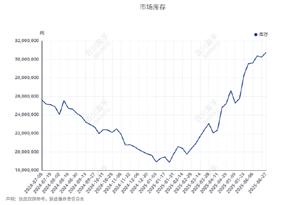
3. Market Forecast for the Second Half of 2025
1. Supply side: It is expected that the release of domestic ore supply increment will be limited in the second half of 2025. The impact of regular inspections on mine mining will continue, and it is not ruled out that new policies will be introduced to further restrict mine operations; In addition, in the second half of the year, the northern region also needs to pay close attention to the impact of rainy weather on mine operations; In the southern region, attention should be paid to the development of policyrelated work and the impact of new mine projects on ore supply. It is expected that in the second half of 2025, the overall operating rate of domestic inland bauxite mines will basically remain at about 5060%, a slight increase compared with the first half of 2025, but the supply gap will not be significantly supplemented.
2. Demand side: According to research by Baichuan Yingfu, it is expected that about 3-5 million tons of new domestic alumina capacity will be released in the second half of 2025, which will further increase the demand for ore. However, the current price trend of alumina is unclear, and the commissioning of new capacity still needs to be further implemented in combination with market conditions, and the specific
Raw material price trends
commissioning situation still needs to be followed up. In terms of ore demand, due to the normalization of domestic ore supply shortage, and new capacity is more concentrated in ports and coastal areas, this part of ore will be mainly imported ore; Previously, some inland capacity switched to imported ore due to market impact. If this part of capacity switches back to domestic ore in the future, it will lead to a certain increase in demand for domestic ore.
3. Other aspects: Due to frequent unexpected situations in Guinea in the first half of 2025, some mining mines were suspended, and the recovery time is uncertain, which will lead to a reduction in the release of Guinea's expected new capacity in 2025 to a certain extent, but there will still be a significant increase compared with the same period in 2024. The supply of overseas ore in the second half of 2025 needs to focus on the impact of Guinea's rainy season and subsequent general elections on ore supply. In terms of price, it is expected that the price fluctuation range of China's imported Guinea ore in the second half of the year will be between 70-80 USD/ton after further analysis based on downstream domestic alumina's demand for imported ore and the acceptance of its price trend for imported ore spot prices;
Comprehensively, in terms of domestic ore, it is expected that the supply will remain relatively tight in the second half of the year; In terms of price, it is expected that long and short factors will interweave in domestic ore prices in the second half of the year, and the general trend will show a narrow range of fluctuation downward. It is expected that the ex-tax daily average price of domestic ore in the second half of 2025 will mostly remain between 460-490 yuan/ton (bare price to the factory). In terms of imported ore, there is still an expectation of new capacity release in Guinea. If there are no unexpected situations in Guinea, this part of increment will be released steadily. However, attention should also be paid to the impact of Guinea's rainy season on ore mining
Raw material price trends
and shipping to further consider the overall supply expectation. It is expected that the quotation of China's imported Guinea Al45%, Si3% spot ore in the second half of 2025 will mostly remain between 7080 USD/ton.
II. Alumina Market
1. Market Review
The price of alumina dropped significantly in the first half of 2025. Since the supply and demand pattern of alumina began to change at the end of 2024, oversupply has become the leading cause of the decline in alumina prices. In the first quarter, the operating rate of China's old alumina capacity was at a high level, and new capacity was put into production and released successively. The obvious oversupply led to a series of problems, such as the reduction of downstream electrolytic aluminum factories' willingness to purchase, the rapid decline of futures prices in advance, and the continuous increase of delivery warehouse inventory. The price of alumina continued to fall, leading to cost inversion in some enterprises. In mid-April, continuous losses led to large-scale maintenance and production reduction by alumina enterprises, resulting in a phased shortage of supply, which supported the stop of the decline and the rise of alumina prices. However, with the recovery of profits, the operating capacity of alumina increased again, coupled with the commissioning of new capacity and the start of shipment, the alumina market returned to the fundamentals of oversupply. Upstream and downstream enterprises entered a



stalemate, with different views on alumina prices. With the emergence of transactions with discounts to spot prices, the price of alumina began to fall continuously again.
2. Supply Side
The completed capacity of alumina increased significantly in the first half of 2025, and enterprises had a good operating situation, resulting in a large increase in market supply. The operating rate of downstream electrolytic aluminum plants was also at a high level, and demand remained at a high level. However, due to the large increase in supply, prices fell. Although costs also decreased, the range was relatively small, and some enterprises had a certain amount of high-priced ore resources, leading to a significant decline in industry profit levels, with most enterprises facing cost inversion. In the second quarter, alumina enterprises carried out maintenance or production reduction one after another, resulting in a significant decrease in operating rate.
Although the price continued to fall in the first quarter of 2025, the operating situation of enterprises remained relatively stable, with most enterprises maintaining stable operating capacity. Individual enterprises occasionally had phased shutdowns of roasting furnaces due to the impact of the heating season, but the overall output was not significantly affected. New capacity was put into production as planned, with 3 million tons of new capacity added in the first quarter, thus increasing operating capacity and leading to an increase in alumina market supply. Due to the good price in the early stage, some enterprises delayed equipment maintenance. In April, losses of alumina enterprises expanded, and some enterprises carried out maintenance accordingly, leading to a decrease in alumina operating rate. However, alumina inventory was at a high level, so although the operating rate was low, the supply of alumina market remained sufficient in a short time. In May, the scale of alumina production reduction in China continued to expand, and coupled with


inventory consumption, the supply of alumina market showed a tight trend. During this period, 4.8 million tons of new alumina capacity in northern China was put into production in April, but the output release was limited, with an impact on the alumina market less than expected, and it did not effectively alleviate the tight supply situation in the second quarter.
3. Future Forecast
China's domestic alumina market will operate weakly in the second half of 2025, and the average market price in the second half of the year is expected to drop by 400-500 yuan/ton compared with the first half. The main reasons affecting the price trend of China's domestic alumina are as follows:
Supply side: Although the second phase project of an alumina group in northern China has been put into production, with products produced from the first two production lines, the output release in the first half of the year was limited. The third production line started feeding, and it is expected to start production in the second half of the year. After the product debugging is completed, the shipment volume is expected to increase significantly; There are still many new capacities in Guangxi in the second half of the year. Among them, a 2 million ton new capacity is being promoted as planned, and it is expected to be put into production in July. The first line is expected to start production in August and sell to the outside in September. A 4.8 million ton alumina project with a total plan has 2 million tons under construction, and it is expected that part of the capacity will be completed by the end of 2025. In addition, there are two projects with plans of 2.4 million tons and 1.2 million tons, which are expected to be put into production by the end of the year. Based on the above, there are still many new capacities planned to be put into production in China's alumina market in the second half of the year, and the situation of oversupply of alumina will become more serious. It is expected that the production adjustment of alumina enterprises will be more frequent in the second half of the year. At
Raw material price trends
the same time, it is not ruled out that new capacities may wait and see the market situation and delay the release of output. Baichuan Yingfu will continue to follow up the changes in market supply and demand. Therefore, it is expected that the supply of alumina market will be sufficient in the second half of 2025;
Demand side: It is expected that there will be some production reduction, resumption of production and new capacity put into production in the market in the second half of 2025. Among them, there are production reduction plans in Xinjiang, Henan, Qinghai and Shandong. However, the production reduction is mainly affected by capacity replacement. In terms of resumption of production, some enterprises in Guangxi and Guizhou, which had high costs and thus carried out production reduction, technical transformation or maintenance, are reported to release capacity in the second half of the year. In terms of new capacity put into production, there are capacity replacement projects to be put into production in Inner Mongolia, Xinjiang, Qinghai and Yunnan. There are new net increased capacity put into production plans in Inner Mongolia and Shandong. Therefore, on the whole, the operating capacity of China's electrolytic aluminum industry will continue to increase in the second half of 2025, and the output may also increase compared with the first half. However, attention should be paid to the precipitation situation in Yunnan. At present, there is still a certain room for improvement in alumina demand;
Imported alumina: In the first half of 2025, the price of imported alumina was higher than that of China's alumina for most of the time, so the quantity of overseas alumina flowing into China's market was limited. In the second quarter, with the tight supply and rising price of China's alumina, a small amount of Australian and Vietnamese alumina flowed into China. At the same time, the internal alumina allocation of a group led to the inflow of Indonesian alumina into China's market. At present, the prices of alumina at
Raw material price trends
home and abroad are falling synchronously, with a certain gap. China's alumina industry is in oversupply, so it is expected that the possibility of large-scale inflow of overseas alumina into China's market is low. Moreover, the high cost makes China's alumina price not competitive compared with overseas alumina prices in the overseas market, so it is expected that the export volume of China's alumina will not increase significantly. Comprehensively, the import and export pattern of China's alumina will not change significantly. At the same time, some electrolytic aluminum plants use Indonesian alumina, leading to a slight increase in the supply pressure of China's alumina.
On the whole, oversupply was the main theme of the alumina market in the first half of 2025, and the spot price of China's alumina dropped significantly. The expected reduction in bauxite supply from Guinea has formed a certain positive factor for the subsequent alumina price, but the specific impact still needs to wait for the further development of the event, which will be continuously followed by Baichuan Yingfu. The expected increase in supply in the second half of the year is large, and the alumina market is expected to remain weak. It is expected that the price of China's domestic alumina market will continue to fall in the second half of 2025, with the daily average price fluctuating in the range of 27003150 yuan/ton.
III. White Corundum Market
1. Market Review:
The price of the white corundum market showed a downward trend in the first half of 2025. The average price of white corundum from January to June 2025 was 5205.2 yuan/ton, an increase of 295.82 yuan/ton compared with the same period last year, with a growth rate of 6.03%. The white corundum market fluctuated greatly in the first half of 2025. In the first quarter, the white corundum market in China was full of festival atmosphere, and market



activity dropped significantly. Due to the impact of the Spring Festival holiday, the white corundum market fell into a phased stagnation. In addition, the price of white corundum was at a high level before the holiday and demand was weak, so the shutdown time of many market players was longer than that in previous years. Affected by the low-price goods dumping by some traders before the holiday, the price of alumina dropped significantly, but the white corundum enterprises were in the finishing stage before the holiday, so the quotation did not drop significantly accordingly. In May, the demand for white corundum in China's market increased, and market activity rose. Due to the stop of the decline and the rise of upstream alumina prices, downstream purchasing willingness for white corundum increased, and the price of white corundum also showed an upward trend. The operating rate of various enterprises remained at a high level, enterprise inventory decreased significantly, and some enterprises faced a shortage of goods. As of June 24, due to the downward fluctuation of upstream alumina prices, downstream customers were cautious in purchasing, and the demand for white corundum decreased.
In the first half of 2025, the operating rate of white corundum enterprises increased. Some enterprises suspended production during the Spring Festival, and due to large price fluctuations and high market risks, the shutdown time of enterprises was


slightly longer than that in previous years, resulting in a significant reduction in white corundum supply. Before the holiday, due to large market changes and weak demand for white corundum, most enterprises maintained production according to orders, and the supply was also small. After the holiday, the price of white corundum still showed a downward trend, and the supply of white corundum in February also remained at a low level. Until March, demand increased significantly, white corundum enterprises basically achieved full production, and supply increased. With the recovery of alumina prices, the resumption of production by various enterprises increased significantly, and the high operating rate of various enterprises and the strengthening of downstream customers' purchasing willingness also promoted the increase of white corundum market supply. Therefore, the supply of white corundum increased, and the rising price also promoted the active production of white corundum enterprises. In May, the demand for white corundum reached a peak, with a significant increase in orders of various enterprises. Although costs increased, the range was limited, and the profits of various enterprises also increased. In June, due to the downward trend of alumina prices, the demand for white corundum decreased, but the original orders of various enterprises were still full, and the overall operating situation changed little.
2. Future Forecast
On the demand side, in summer, with high temperature and rainy weather, the operating rate of construction sites is low, which is the traditional off-season for the steel industry, and the operating rate of refractory enterprises will also be at a low level, so the overall demand for white corundum will be at a low level. In addition, the price of upstream
Raw material price trends
alumina shows a downward trend, so downstream purchasers' demand for white corundum will decrease significantly, and the purchase of white corundum will still be based on rigid demand in a short time.
On the supply side, the price of alumina in the third quarter may maintain a weak and stable operation, so the cost of white corundum will decrease. Coupled with the arrival of the traditional off-season of the industry, downstream customers purchase on rigid demand, so some enterprises may reduce shipment, and the operating rate of white corundum will decrease. However, from the overall market perspective, the supply of white corundum is still sufficient;
On the cost side, there is still an expectation of increase in alumina market supply, and market competition is intensifying. However, the room for improvement in alumina market demand is gradually narrowing, and the supply and demand situation of the alumina market may change, thus driving down the price of alumina. The cost of white corundum in the second half of 2024 will be lower than that in the first half;
Comprehensively, with reduced costs and downstream price pressure, the price of white corundum will show a downward trend. It is expected that the price of white corundum will show an overall downward trend in the second half of 2025, and the price range will probably be maintained at 4500-5000 yuan/ton.


The functional applications of diamond demonstrate its "kingly demeanor".
Wang Guangzu, Zhengzhou Abrasives & Grinding Research Institute
Wang Yun, Changzhou Huazhong Diamond Tools Manufacturing Co., Ltd.
Qin Yu, Henan Eagle Abrasives & Grinding Tools Co., Ltd.
Diamond is a material that integrates excellent chemical, physical, mechanical, and other properties. Over the past few decades, the extremely high hardness and excellent wear resistance of diamond have been fully explored, making it widely used in machinery, building materials, petroleum, automotive, aerospace, semiconductor processing, and other fields in the form of abrasives, abrasive tools, cutting tools, etc., playing an irreplaceable role. In fact, diamond also has very unique and excellent properties in many aspects such as electrical, optical, acoustic, and thermal properties, but these have not been effectively developed. Based on the characteristics and application status of diamond, it can be roughly divided into traditional diamond and functional diamond: traditional diamond mainly utilizes its mechanical properties (such as hardness and wear resistance), while functional diamond mainly utilizes its non-mechanical properties (such as electrical, optical, thermal properties, etc.).
Diamond has excellent electrical properties, including an ultra-wide bandgap, ultra-high breakdown strength, and high electron and hole mobilities, which makes it expected to become the ultimate semiconductor material. In terms of acoustics, diamond has the highest surface acoustic wave velocity and extremely high Young's modulus among all materials; in terms of optics, diamond can transmit photons from far-infrared to ultraviolet (below the bandgap energy); in terms of thermal properties, its thermal conductivity exceeds that of copper. Therefore, diamond has cross-field application
potential.
In this article, the author briefly summarizes the relevant materials on the functional applications of diamond read and introduces them below for the benefit of colleagues and like-minded individuals.
1. Gem-Grade Synthetic Diamond
The promotion and application of traditional industrial diamonds in the jewelry field is the most successful example of the commercial application of functional diamonds. In May 2018, De Beers, a leading international natural diamond company, officially announced the establishment of the labgrown diamond brand Lightbox Jewelry, starting to sell lab-grown diamond jewelry, providing consumers with high-quality synthetic diamonds that are cheaper than natural diamonds. This important event has significantly elevated the status of synthetic diamonds, and artificially synthesized diamonds have obtained their well-deserved official name - lab-grown diamonds, becoming a milestone in the application of synthetic diamonds in the jewelry industry.
Data shows that from 2014 to 2018, the market capacity of gem-grade lab-grown diamonds in China showed a growing trend. In 2014, the market capacity of gem-grade lab-grown diamonds in China was approximately 40 million yuan, and by 2018, it had increased to about 3.75 billion yuan, with a compound annual growth rate of more than 200%. In recent years, the global demand for diamonds among consumers has been continuously increasing.


As the world's second-largest diamond consumer, China's consumption of lab-grown diamonds reached 6.8 million carats in 2021. In the next few years, the output of lab-grown diamonds in China will continue to rise. Diamond consumption is no longer limited to wedding purposes but has gradually become a daily consumer product, which has promoted an increase in the frequency of diamond purchases. However, compared with developed markets, the per capita diamond consumption in China is still low. A 2018 De Beers report showed that 70% of U.S. residents own diamond jewelry, while only 20% of urban residents in China own diamond jewelry, indicating that China's diamond market still has broad development space. Therefore, with the improvement of Chinese residents' living standards and the increase in awareness of lab-grown diamonds, the market demand for lab-grown diamonds in China will continue to grow in the future.
2. Optical Applications
The broad spectral transmission characteristics of diamond are unparalleled by other optical materials. High-quality CVD diamond films, except for a narrow two-phonon vibration absorption band in the range of 2.5~6μm, have excellent transparency from ultraviolet to far-infrared (even millimeter waves). The optical-grade diamonds prepared by Element Six's DIAMFILM and Fraunhofer Institute, except for the narrow ultraviolet band above 0.2μm, have almost the same optical properties as single-crystal Type IIa diamonds, and even have higher transmittance in the infrared band, close to the theoretical limit of diamond.
Practice has shown that diamond is an ideal multi-spectral optical material. Due to its ultrawide bandgap, even under laser or strong radiation illumination, it will not produce thermal charges and nonlinear effects. With its excellent comprehensive properties, diamond has shown a "dominant position"
in optical components used under ultra-high power density and extreme conditions, and is praised by material scientists as the "ultimate optical material".
At present, military optics is still the main application field of thick diamond films. Various CVD diamond component products are being used more and more widely, such as being the best material for hypersonic missile (4~6 Mach) nose cones. In addition, diamond can also be used in reconnaissance satellite infrared windows, aircraft forward-looking infrared windows, and military guidance devices. In July 2000, the UK Defense Evaluation and Research Agency (DERA) announced its developed diamond missile nose cone sample, which is said to be the world's first display of such products. Diamond is called the "ultimate nose cone material", and the progress of this technology may promote the development of a new generation of missile guidance technology.
Currently, commonly used infrared window materials include ZnS and ZnSe, which, although having good infrared transmission capabilities, are easily damaged. In military applications, infrared windows need to work under extremely harsh conditions, for example, missile infrared windows need to withstand harsh environments such as highspeed flight, sand, rain, and snow. Due to its excellent infrared anti-reflection properties, diamond films can be used as ideal anti-reflection coating materials, and their high thermal conductivity and wear resistance can effectively protect infrared windows from external impacts. Therefore, coating diamond films on the surface of infrared windows can fully meet the highperformance requirements of infrared windows in the military and aerospace fields.
The transparent diamond window synthesized by South Africa's De Beers can have a diameter of up to 16 cm and a thickness of more than 2 mm.
Technology
Due to the extremely few defects in optical-grade diamond films, their light absorption coefficient can be as low as below 0.1 cm -¹, or even 0.027 cm -¹. The light transmission efficiency is closely related to the interface flatness or roughness, so the surface polishing technology of diamond windows is crucial. The current technology can control the surface roughness (Ra value) below 5 nm, meeting the needs of most optical applications.
In addition, small X-ray windows can be used in EDAX detectors of scanning electron microscopes or as X-ray transmission films for submicron integrated circuits (ICs). Diamond windows can also be made into detection tubes for measuring the infrared spectrum of molten high molecular polymers. In the medical field, diamond windows can be used to manufacture medical endoscopes for observing the internal conditions of the human body. Diamond has even been used in space exploration; for example, the "Pioneer" spacecraft carried a 2 mm diameter diamond window. The atmosphere of Venus has a temperature of up to 500°C and contains strongly corrosive acidic gases, and only diamond can remain transparent for a long time in such an environment, ensuring the accuracy of incident light measurement data.
3. High-Temperature, High-Frequency Semiconductor
Material Applications
In recent years, single-crystal diamonds synthesized by plasma chemical vapor deposition (CVD) (i.e., semiconductor-grade CVD diamonds) have comprehensive properties such as extremely high insulation and excellent carrier mobility, and have attracted much attention in high-voltage and high-frequency application fields. They have broad market demand in modern aerospace, automobile industry, and power transmission and distribution systems. The key challenge for electronic power equipment is to reduce the weight and volume of heat dissipation and cooling components and enable them to work stably in high-temperature


environments. Wide bandgap semiconductors (such as CVD diamonds) can operate at higher operating temperatures than traditional silicon-based power devices. Solid-state circuit devices made of CVD diamonds have superior characteristics that silicon devices cannot match, which is expected to optimize existing electrical designs and circuit layouts, thereby promoting structural innovation of future aerospace power electronic equipment.
The penetration and escape of light are closely related to the interface flatness or roughness, so the surface polishing technology of diamond windows is crucial. The current technology can reduce the surface roughness (Ra value) to below 5 nm, and this smoothness can meet the needs of most optical applications.
When a transistor is working, the maximum allowable voltage is inversely proportional to the cutoff frequency. Diamond transistors can use a much higher frequency than other semiconductor materials. CVD diamond films are mostly polycrystalline, and due to too many grain boundaries, they are not suitable for directly manufacturing transistors. The hole mobility of this polycrystalline film is only 30 cm²/V·s, which is much lower than that of singlecrystal materials. By applying a diamond bias to the substrate, a highly oriented polycrystalline structure can be generated. If the growth rate is appropriately reduced, polycrystalline diamonds similar to single crystals can be prepared, whose hole mobility has exceeded 200 cm²/V·s.
To prepare diamond transistors, the problem of appropriate doping must be solved. Diamond can be doped with boron several times more than silicon to make up for the deficiency in hole mobility. The maximum operating temperature of CVD diamond semiconductors can reach above 600°C, which is the ultimate application goal of diamond materials. CVD diamonds are expected to replace semiconductor materials such as germanium, silicon, and gallium


arsenide that are widely used at present, becoming a milestone in the development of semiconductor materials and technologies.
4. Acoustic Applications
Diamond has an extremely high elastic modulus and is the material with the highest sound speed in nature, having unique advantages in the acoustic field. Although diamond itself does not have piezoelectric effects, it can be compounded with other piezoelectric materials to prepare high-frequency piezoelectric devices. For example, ZnO/diamond, AlN/diamond, LiNbO 3 /diamond, SiO 2 /diamond, and SiO 2 /ZnO/diamond multi-layer piezoelectric composites can all achieve a sound speed of about 10,000 m/s.
Diamond's ultra-high sound speed, rigidity, strength, thermal conductivity, and wear resistance make it an ideal material for high-quality electroacoustic devices. In 2001, Germany's Accuton company launched the world's first pure diamond spherical tweeter, whose diaphragm thickness is only a few microns and diameter is 18.9 mm. This product has set several performance records: weight is only 0.09 g, high-frequency response reaches 100 kHz (10 times that of ordinary speakers), and rated power is 200 W.
In recent years, the rapid development of large-scale information transmission and mobile communication industries has promoted the planning and major reforms of global standardized communication systems. These mainly include mobile and automotive communication systems above 2.0 GHz, and military navigation systems above 3.0 GHz in maritime, aviation, and ground communications. In addition, the planned new low-Earth orbit high-fidelity, large-information digital communication satellite systems will also use SAW filters as radio frequency bandpass filters, with the highest frequency of their ISM band reaching above 5.0 GHz. Therefore, people are planning and effectively utilizing these precious
and limited natural resources in a planned way.
The frequency range used by these communication systems is 1-6 GHz, especially the extremely high-frequency band of 3-6 GHz, which is a key development area. The research and development of stable-performance extremely highfrequency surface acoustic wave devices will be the key to the development of extremely high-frequency radio wave resources, and diamond films will provide ideal substrate materials for extremely highfrequency surface acoustic wave devices. The highperformance diamond surface acoustic wave devices launched in 2000 have the advantages of high frequency, high power, small size, low temperature coefficient, and low insertion loss. Their main performance indicators are: the highest frequency is 3.8 GHz, the insertion loss has been reduced to 7 dB, and the frequency temperature coefficient in the range of 40-800°C is about 1.5×10-⁶. These devices are superior to piezoelectric crystal products not only in frequency characteristics but also in main indicators such as insertion loss, temperature stability, and phase shift.
In addition to being used in the manufacture of speaker diaphragms, the excellent vibration characteristics of diamond can also be used in the manufacture of surface acoustic wave filters. Ordinary SAW filters use quartz or LiNbO3 materials, and their operating frequency is below 1 GHz (corresponding to an IDT line spacing of 1 μm). Diamond filters can reach a frequency of up to 2.5 GHz and can be made into high-value-added communication components, such as those used in mobile phones or optical communication systems.
Under the same line width, diamond filters can achieve several times the frequency of traditional ceramic-based filters. Moreover, the input and output energy of diamond filters can be significantly improved, and their durability is more than 100 times that of traditional ceramic filters.
Technology
At the same time, diamond films have excellent optical, mechanical, and electrical properties such as high resistance, high breakdown field strength, low dielectric constant, extremely low thermal expansion coefficient, wide spectral transmission range, wide bandgap, and extremely high carrier mobility, so they can be widely used as main components of special functional microelectronic systems, such as microsensors, microactuators, laser devices, etc. In addition, the high-temperature resistance and corrosion resistance of diamond films enable diamond micro-electromechanical system (MEMS) devices to work normally in harsh environments, which cannot be replaced by other electronic materials. However, there are still few successfully developed diamond film MEMS devices, only a few types of special sensors. The main reason is that diamond film processing is difficult.
However, through research on CVD diamond film micromachining technology and selecting appropriate processing processes for different application needs, the requirements for diamond film structure processing and MEMS device development have been basically met. Among them, the oxidation reactive ion etching technology with metal masks has the most extensive application prospects, and coupled with the relatively popular RIE etching equipment, this will strongly promote the application of diamond films in MEMS systems.
The replacement of single-crystal diamond products by CVD nano-homogenizers has been successful, with a maximum working pressure of 200-300 GPa and a crushing particle size of 40-60 nm. The manufacture of CVD nano-homogenizers involves jet system design, path planning, and precision processing of diamonds, which is a key technology for manufacturing nano-material homogenizers. CVD nano-homogenizers have been widely used in biology, medicine, food, chemistry, and


other fields, and will become a new promising and potential market application direction for diamond films.
5. Heat Sink Applications
CVD diamond has extremely high thermal conductivity, especially the ability to prepare largesized bulk materials, making it the most ideal heat sink material to date. The most important application of CVD diamond is the heat dissipation of highpower density electronic devices. Harris Corporation has developed various heat-dissipating diamond film products using Element Six's DIAMFILM thick diamond film materials, mainly including heat sinks for laser diodes, laser diode arrays, high-power triodes, and other devices. The laser diode array devices with CVD diamond heat sinks developed by the company have a single strip power of up to 100 W and a lifespan of more than 10,000 hours.
CVD diamond has high thermal conductivity equivalent to that of single-crystal Type II diamonds, making it widely used as heat dissipation components for high-power density high-end devices in active fields such as electronics, photonics, and optical communications. The main applications include high-tech fields such as laser diodes and arrays, high-speed computer CPU chips, multi-dimensional integrated circuits, military high-power radars, microwave traveling wave tube thermal conduction support rods, microwave integrated circuit substrates, and integrated circuit packaging automatic bonding tools TAB (tape automated bonding).
A representative application of CVD diamond in heat sink applications is the TAB tool for largescale integrated circuit assembly. It is characterized by wear resistance, heat resistance, corrosion resistance, and especially excellent thermal conductivity. Sumitomo Electric Industries in Japan has developed various series of CVD diamond TAB


tools, some of which have achieved commercial production. Recent preliminary test results show that the new CVD diamond TAB tools have good application prospects in flip-chip bonding.
6. Electrical Applications
As is known to all, the performance indicators of diamond materials are better than those of silicon electronic materials, among which parameters such as bandgap width, dielectric constant, and energy for generating electron pairs are the highest among known materials. At present, CVD diamond has achieved commercial production. In addition, diamond also has negative electron affinity, excellent radiation resistance, and chemical stability, making CVD diamond as an electronic material have higher value and broader prospects than silicon and gallium arsenide in detector applications.
Solid-state circuit devices made of CVD diamond, a wide bandgap material, have superior characteristics different from silicon devices, which may improve existing electrical designs and circuit layouts, thereby affecting the structure of future aerospace power electronic equipment.
In recent years, diamond films have received great attention in electronic applications and research fields such as field emission and microelectromechanical systems (MEMS). The diamond surface has a negative electron affinity and a very low electron emission threshold, making it an ideal material for manufacturing high-performance flat-panel displays. Compared with the current mainstream CRT (cathode ray tube) and LCD (liquid crystal) displays, diamond field emission displays have the advantages of not requiring high-voltage electron acceleration and backlighting, and are small in size and energy-saving. Internationally, research on diamond field emission applications, especially diamond flat-panel displays, has been expanding.
At present, extensive and in-depth research has been carried out on the structure, performance, and key technologies of diamond field emission displays (FED), such as the preparation of high-emission rate nano-diamond microtips, selective growth, doping, and performance measurement, and many valuable results have been achieved. As a diamond field emission cathode, the use of ultra-nano diamonds has more advantages, such as high surface finish, good uniformity, and conductivity, which can significantly reduce the manufacturing cost of FED.
MEMS is a strategic manufacturing technology that integrates micromechanical components and semiconductor microcircuits on a chip. In the past decade or so, MEMS technology has shown strong vitality and developed rapidly, with broad application prospects in almost all fields such as aerospace, automotive, biomedicine, and environmental monitoring. Micromechanical components have extremely high requirements for material properties.
Internationally, the development of nanodiamond films in MEMS systems has been carried out in laboratories in the United States, Europe, Japan, and other countries and regions, and certain progress has been made. The comb driver produced by Sandia National Laboratory is the world's first diamond MEMS device, which can resonate at a frequency of 5500 Hz under electrical signal drive. Argonne National Laboratory in the United States and the University of ULM in Germany have prepared CVD diamond cantilever strain gauges, and the University of ULM has also produced micro-diamond jet components. The application and development of CVD diamond MEMS devices have achieved initial results.
At present, diamond field emission displays and micro-electromechanical systems are in the basic research stage, and many technical problems remain
Technology
to be solved. But there is no doubt that once the technology matures, the development speed will be very fast. These technologies will represent the latest direction of scientific and technological development and will promote technological progress in multiple fields. Although it will not form a multi-billion-dollar market like silicon technology in the short term, it has broad market prospects.
Due to the low microwave energy absorption rate, high thermal conductivity, and small dielectric constant of CVD diamond, it is crucial in microwave applications. It is worth mentioning that diamond microwave transmission windows are currently key components of nuclear fusion tests in Germany and Japan, and also important components of the International Thermonuclear Experimental Reactor being built in France. Compared with materials such as silicon and gallium arsenide commonly used in electronic circuits, the inherent characteristics of single-crystal CVD diamond are obviously more advantageous. DMD has cooperated with Filtronic, a world-leading company in the design and manufacture of microwave devices and electronic systems, integrating scientific and technological forces in raw materials, semiconductor devices, and circuit design to research new diamond devices, with the expectation of improving microwave power electronic equipment, which may trigger major changes in microwave power electronic equipment.
7. Thermal Conductivity Applications
With its high thermal conductivity and radiation resistance, depositing diamond films on the surface of spacecraft components can significantly improve heat dissipation capacity, enabling the components to have thermal shock resistance and radiation resistance. At the same time, due to the significant reduction in the weight of the spacecraft, the launch cost can be significantly reduced. For example, if the refrigeration system, which currently accounts for 65% of the average weight of a satellite, uses


diamond film chips, the weight can be reduced by 90%, thereby reducing the satellite launch cost to one-tenth of the original.
With the development of miniaturization of electronic equipment, the power density continues to increase, and heat dissipation has become a key challenge in microelectronic packaging technology. At present, there have been cases of CVD diamond films being used in heat pipes abroad, mainly to solve the heat dissipation problem of high-power and large heat flux density components, including heat dissipation applications of high-power laser diode arrays, two-dimensional multi-chip modules (MCM), and solid-state microwave power devices. The instant heat dissipation characteristics of diamond make it gradually become an ideal heat dissipation material for high-power electronic products (such as LEDs or lasers).
The higher the performance of electronic equipment, the greater the difficulty of thermal management. The heat flux of some semiconductor components can reach several tens of kilowatts per square centimeter, which is 5 times the heat flux on the sun's surface. The development of semiconductors not only needs to improve performance but also heat generation control and heat dissipation performance have become key factors in design. Heat generation is related to chip manufacturing processes and temperature control algorithms, while heat dissipation performance can be improved through material and structural optimization.
As a new high-end thermal management solution, CVD diamond is particularly suitable for radio frequency power amplifiers. It has been confirmed that CVD diamond heat sinks can significantly reduce package thermal resistance, and their performance is far superior to existing chip bonding materials, providing a reliable thermal management solution for


semiconductor packaging.
Diamond, as a solid-state laser material, brings new opportunities for the design of compact highpower lasers. These lasers not only have stronger power-carrying capacity but also can achieve wavelengths that are difficult to obtain with existing technologies, thereby opening up new application fields.
The Raman gain coefficient of diamond is higher than that of other Raman materials such as tungstate, barium borate, and silicon. Among all materials, synthetic diamond has the largest Raman shift and the widest light transmission range (about 225 nm ultraviolet to 100 μm far-infrared). Many spectral regions (such as the yellow light required for medicine) are difficult to achieve with current laser technology, which has become one of the main driving forces for the research of diamond Raman lasers.
8. Biomedical and Quantum Applications
The DNCD-Horizon successfully developed by ADT is the smoothest UNCD film today, marking an epoch-making progress in CVD diamond technology. Its surface finish reaches the level of electronicgrade silicon wafers, opening a new era of diamond film applications in electronic devices and biomedical fields.
As a special monitoring system, diamond particle detectors can accurately measure particle beam intensity (from single ions to more than 10^9 ions), perform ion beam positioning and profile measurement, and analyze particle output structure using ultra-short time resolution detectors. These detectors will be widely used in nuclear industry, aerospace, medical, and information fields. CVD diamond not only has the advantages of radiation resistance, high sensitivity, excellent signal-tonoise ratio, stability, and fast response, but also the
sensitivity of its radiation dosimeter is 4 times that of natural diamond or 3.5 times that of silicon diodes. This result has strongly promoted the application of CVD diamond detectors in the field of radiotherapy.
The good compatibility of diamond with the human body makes it an ideal choice for medical materials such as heart valves and artificial joint coatings.
If quantum-grade ultra-pure single-crystal CVD diamonds are successfully applied in quantum computers, it will greatly improve computing speed, realize rapid retrieval of massive data and construction of complex models, and even crack highly complex codes. At present, military agencies of various countries are fully supporting the research and development of quantum computers, and this ultra-pure isotropic quantum single-crystal CVD diamond will become a key material.
9. Nano-Diamond Lubricating Oil
Nano-diamonds have a large specific surface area and abundant surface functional groups, endowing them with special adsorption and chemical reaction activity. The treated spherical nanodiamonds have good dispersibility in lubricating oil. A large number of experiments have shown that adding 0.1% spherical nano-diamonds can significantly improve the anti-wear and vibrationdamping effects of lubricating oil, which is suitable for various mechanical structures. However, it should be noted that spherical nano-diamonds are not suitable for bearing friction because they will produce grinding effects in point contact friction pairs; in surface contact friction pairs, they can reduce surface roughness, repair damaged engine cylinders, and realize the transformation from sliding friction to rolling friction, thereby improving engine power output, reducing fuel consumption, extending service life, and reducing noise and exhaust emissions.
Technology
10. Diamond-Reinforced Nano Super Steel
Through the deep surface layer nano-diamond reconstruction (nano-diamond infiltration) technology of the steel matrix, a series of super special steels with excellent mechanical and physical propertiesnano-diamond particle-reinforced super nano-steels have been developed. This material has:
Ultra-high hardness (50-74HRC), 10-20HRC higher than that of the same matrix steel;
Ultra-high strength (1500-2500MPa), better than conventional high-strength steel;
Superior wear resistance (20 times that of carburized steel, better than ceramics);
Ultra-low friction coefficient (the dry friction coefficient of diamond super steel to steel is 0.09);
Excellent impact resistance (better than existing armor steel at high strain rates);
Good plasticity and toughness;
Excellent high-temperature performance.
This material is expected to be applied in mining, metallurgy, engineering machinery, new energy, environmental protection, petrochemical, fluid machinery, bearings, gears, cutting tools and molds, rolls, and national defense and military industries.
11. Future Development
In the early 1980s, breakthroughs were made in CVD diamond film growth technology, and currently, four forms have been developed: (1) pure polycrystalline diamond films; (2) coated diamonds; (3) large single-crystal diamonds; (4) nano-diamond films. With the continuous development of technology and cost reduction, their comprehensive performance and applications will be gradually realized.


Material scientists believe that CVD will become the mainstream of diamond material development, which can not only bring huge economic benefits but also exert the characteristics of diamonds to the extreme, becoming a key material in processing, automobile, information, energy, national defense, and cutting-edge technology fields, and promoting industrial structure upgrading.
The industrialization of CVD diamond has injected new vitality into China's diamond industry, made up for the shortcomings of PCD and natural diamonds, and had a profound impact on the technical development and industrial structure of the industry.
At present, the scale of the CVD diamond market is lower than expected, mainly due to:
(1) The cost is still high, and high-end products are mainly limited to military and national defense applications;
(2) As a new technology product, market awareness needs to be improved;
(3) It involves multi-field technologies, and there are still technical difficulties to be overcome.
In the future, the market for high-functional diamond films will expand rapidly. With the popularization of diamond products, human material civilization may enter the eternal "diamond age" - because its performance limit is difficult to be surpassed by other materials.


Cutting is not a brute-force job: Achieving smarter machining with cemented carbide band saw blades
In sawing difficult-to-machine materials (such as titanium alloys, stainless steels, heat-resistant alloys, and surface-hardened metals), carbide-tipped band saw blades have become widely used tools due to their excellent cutting efficiency and durability. In recent years, more and more users have also begun to apply them to the processing of ordinary materials, finding that they offer fast cutting speeds, good surface finish, and a service life that is approximately 20% longer than traditional bimetallic saw blades.
Tooth Structure and Geometry
Common tooth types of carbide band saw blades include three-tooth cutting, trapezoidal ground teeth, and other structures. Among them, the three-tooth cutting tooth shape usually adopts a positive rake angle design, which helps to quickly "bite into" highstrength or high-hardness materials and form chips, making it suitable for high-efficiency production scenarios. When dealing with surface-hardened materials (such as cylinder rods or hydraulic shafts), a negative rake angle tooth shape is more recommended. This structure helps to "push aside" the hard surface layer under high-heat conditions, thereby completing the cutting smoothly.
For abrasive materials such as cast aluminum, band saw blades with a wide pitch and wide gullet design are more applicable, which can effectively reduce the clamping force of the material on the back of the saw blade and extend the tool life.
Different Saw Blade Types and Their Application Ranges
Small-diameter materials (<152mm): Suitable for carbide saw blades with a three-tooth structure and positive rake angle tooth shape, which have good cutting efficiency and material adaptability.
Large-diameter materials: It is recommended to use saw blades with a multi-edge design, usually grinding up to five cutting surfaces on each tooth tip to enhance the cutting-in ability and improve the material removal rate.
Surface-hardened parts: A negative rake angle, three-tooth saw blade should be selected, which can achieve high-temperature cutting, quickly discharge chips, and effectively cut through the outer hard shell.
Non-ferrous metals and cast aluminum: Saw blades with a wide pitch design are suitable to avoid gullet clamping and reduce early failure.
Universal cutting scenarios: It is recommended to use universal carbide band saw blades with a neutral or small positive rake angle tooth shape, which are suitable for various material shapes and cutting requirements.
Impact of Tooth Profile on Cutting Quality
Different tooth profiles correspond to different chip formation methods. For example, one design uses four ground teeth to form seven chips. During the cutting process, each tooth evenly shares the load, which helps to obtain a flatter and straighter cutting surface. Another design uses a three-tooth structure to cut five chips. Although the surface roughness is slightly higher, the cutting speed is
Technology
faster, making it suitable for processing scenarios where efficiency is a priority.
Coating and Cooling
Some carbide saw blades are provided with additional coatings, such as titanium nitride (TiN) and aluminum titanium nitride (AlTiN), to improve wear resistance and heat resistance, making them suitable for high-speed and high-feed applications. It is worth noting that different coatings are suitable for different working conditions, and whether to use a coating needs to be comprehensively considered according to specific application scenarios.
In terms of cooling methods, flood cooling is still recommended when cutting superalloys or high-hardness steels to improve heat dissipation efficiency. When sawing non-ferrous metals such as aluminum, mist cooling is often used, which uses a mixture of emulsified oil and air for cooling and lubrication. In addition, when using a negative rake angle tooth shape for high-temperature cutting, using a large amount of coolant may cause thermal shock and damage the cutter head. Therefore, it is recommended to apply coolant only at a low frequency on the side of the blade for lubrication, not for cooling.
Re-grinding and Tool Life
Some carbide band saw blades can be reground multiple times (3-5 times), such as circular


saw blades or thin saw blades used for non-ferrous metal cutting. The number of re-grindings is limited by the cutter head size and tooth profile accuracy. For thin-kerf saw blades or saw blades designed for one-time use (such as most saw blades used for ferrous metals), they are usually discarded after failure without re-grinding.
Matching of Cutting System
The performance of carbide band saw blades depends not only on the tooth shape and material but also on multiple factors such as machine tool status, cooling system, operator experience, and the nature of the processed material. During the selection process, the stability and consistency of the entire processing system must be comprehensively considered. High-level equipment maintenance and process control are the keys to exerting the efficiency of carbide band saw blades.


How to select suitable grinding beads in wet grinding?
In the wet grinding process, the selection of grinding beads is directly related to the final grinding efficiency, product quality, and equipment service life. Whether in industries such as coatings, inks, electronic pastes, or biomedicine, choosing suitable grinding beads is crucial. This article will help you scientifically select the right ones from multiple perspectives to achieve efficient and stable grinding results.
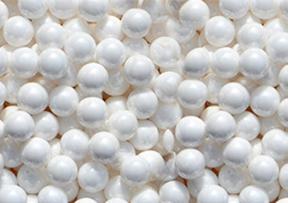
I. Clarify the Grinding Goals
Before selecting grinding beads, it is first necessary to clarify the core goals of the grinding process. Particle size requirements are one of the basic considerations: if the product requires submicron or even nanoscale particle sizes, smallerdiameter grinding beads are needed to provide sufficient shear force and energy density, thereby achieving higher grinding efficiency. In addition, the hardness of the material will also affect the choice of bead material. For example, high-hardness materials will accelerate the wear of the beads during grinding,
so it is usually necessary to use bead materials with high strength and wear resistance such as zirconia; for relatively soft materials, more cost-effective glass beads or alumina beads can be chosen. Another factor that must be considered is product sensitivity, especially in application scenarios with high cleanliness requirements such as pharmaceuticals, biological products, and electronic pastes. Metal ion migration or trace impurities during grinding may affect product performance. In this case, priority should be given to non-metallic bead materials with low pollution and strong chemical stability, such as high-purity zirconia or alumina beads, to ensure product safety and consistency.
II. Select Bead Material Based on Chemical Compatibility and Wear Resistance
Grinding bead materials need to have good chemical stability and mechanical properties. The following are the characteristics and application scenarios of several commonly used materials:
Different material beads have their own advantages, and a comprehensive consideration should be made based on your material characteristics and product positioning.
III. Reasonably Choose Bead Particle Size and Particle Size Distribution
The size and distribution of grinding beads have a significant impact on the grinding effect: Small particle size (<0.3mm) beads have a large surface area and high collision frequency, which are suitable for scenarios pursuing extremely fine particle
Technology
sizes;
Large particle size (>0.6mm) beads have stronger impact force and are suitable for primary rough grinding or pretreatment of materials with larger particle sizes;
In some industrial applications, mixing large and small beads can form a more coordinated grinding environment, which helps to improve efficiency and the uniformity of product particle size distribution.
In actual operation, scientifically controlling the bead size distribution is often more advantageous than using a single particle size.
IV. Pay Attention to the Impact of Bead Density on Grinding Intensity
The density of grinding beads determines their impact energy and grinding intensity:
High-density beads (>5.5g/cm³) have strong impact force, which helps to quickly break hard materials and are often used in ultra-fine grinding of inorganic materials;
Low-density beads (2.5–4.0g/cm³) have gentle impact, which are suitable for fragile and heatsensitive materials, and can effectively reduce overheating and shear damage during grinding.
The choice of density not only affects efficiency but also relates to energy consumption and temperature control, and must be optimized in coordination with equipment parameters.
V. Control Pollution Risks
Pollution control is an important consideration in wet grinding, especially in industries such as medicine, food, and electronics. Some bead materials such as steel beads and impure ceramics may release metals or unexpected elements, causing product pollution. In this case, priority should be given to glass beads, zirconia beads, or high-purity ceramic materials to ensure system cleanliness.
VI. Comprehensively Consider Cost and Service


Life
The prices of different bead materials vary greatly, and their service lives and maintenance costs are also different:
High-performance beads, although having a higher initial purchase cost, have a long service life, reduce replacement frequency and equipment downtime, and are more cost-effective in the long run;
Low-cost beads have a small initial investment, but if they are replaced frequently or are easily worn, they will increase the total operating cost instead. It is recommended to evaluate the material wear rate, energy consumption, and output changes in combination with the enterprise's production line situation to make a more economically beneficial choice.
VII. Small-Scale Test Verification and Parameter Optimization
After selecting the bead material, it is recommended to conduct small-scale test verification: Test the achievement of the target particle size, grinding time, product consistency, and whether there are by-products.
The test results can be used to adjust key parameters such as rotation speed, bead filling ratio, and grinding time to ensure that the final mass production effect meets the standards.
Conclusion: Although grinding beads are small, they determine the efficiency, product quality, and economic benefits of wet grinding. Scientific selection needs to take into account target requirements, material characteristics, equipment matching, and cost control. Through sufficient preliminary testing and parameter optimization, not only can efficient grinding be achieved, but also the production stability and product competitiveness can be greatly improved.


Ceramic cutting tools: A powerful tool for high-temperature and high-speed cutting, why haven't they been fully utilized?
Ceramic cutting tools, with their excellent hightemperature resistance and high-speed machining capabilities, are showing increasingly broad application prospects in the field of metal cutting. However, due to the limitations of industry cognition regarding ceramic cutting tools, many processing enterprises have not yet fully utilized the potential of this type of tool, and even fail to recognize the feasibility and economy of replacing traditional tools with them in some fields.
I. Core Advantages of Ceramic Cutting Tools
Ceramic materials have excellent thermal conductivity during cutting, which can effectively conduct a large amount of heat generated in the cutting zone away from the cutting edge, thereby extending the life of the cutting edge and improving the overall service life of the tool. In contrast, commonly used materials such as cemented carbide, cubic boron nitride (CBN), and polycrystalline diamond (PCD) have poor thermal conductivity, and heat tends to concentrate near the cutting edge, leading to accelerated tool wear.
Due to their good thermal conductivity, ceramic cutting tools can perform cutting at much higher linear speeds. For example, when machining heatresistant alloys, the typical cutting speed of cemented carbide tools is about 125 SFM (surface feet per minute), while that of ceramic cutting tools can reach 800 to 1500 SFM, and some advanced ceramic materials can even reach 1600 SFM. This highspeed machining capability significantly improves production efficiency per unit time.
II. Limitations of Ceramic Cutting Tools
Despite their advantages in high-speed machining, ceramic cutting tools have some limitations. Firstly, due to the hard and brittle nature of the material itself, it is difficult for ceramic cutting tools to be processed into very sharp edges, resulting in their cutting sharpness being lower than that of cemented carbide tools. In addition, the manufacturing cost of ceramic cutting tools is relatively high. Taking indexable inserts as an example, ceramic inserts require a large number of precision grinding processes after forming, and it is difficult to achieve mass low-cost production like cemented carbide. Depending on specific size and shape requirements, the price of ceramic inserts may be 1.5 to 4 times that of traditional inserts; and the cost of an entire ceramic cutting tool may be 2 to 4 times that of ordinary tools.
Moreover, high-speed operation has higher requirements for equipment. Although some enterprises are interested in ceramic cutting tools, they often cannot give full play to the performance of ceramic cutting tools because their machine tools cannot reach the required high spindle speed or lack knowledge of corresponding tool parameters.
III. Typical Application Fields
Ceramic cutting tools are widely applicable to various high-temperature, high-hardness, or difficultto-machine materials, including but not limited to the following:
1. High-hardness stainless steel
Ceramic cutting tools are suitable for machining stainless steel with a Rockwell hardness of 32–35 or higher. Under such high hardness conditions, the temperature in the machining area is extremely high,
Technology
and the thermal stability and high-speed performance of ceramics are fully utilized. If the hardness of the processed material is low, problems such as surface melting or even combustion may occur due to the accumulation of cutting heat.
2. Powder metallurgy materials
Powder metallurgy is widely used in the manufacture of automotive parts, with both abrasive and high-temperature characteristics, causing extremely fast tool wear. Although CBN tools are usually used for processing, their cost is extremely high. Ceramic cutting tools perform well on such materials, and their cost is significantly lower than that of CBN.
3. Compacted graphite iron (CGI)
CGI is a new type of high-strength cast iron, widely used in the manufacture of diesel engine cylinder blocks. Traditional tools are prone to wear and have high costs. Ceramic cutting tools show good cost performance in CGI processing, with a service life up to more than 10 times that of cemented carbide tools.
4. Replacement of grinding processes
In the processing of some high-hardness parts, ceramic cutting tools can replace cylindrical grinding or surface grinding processes, significantly increasing the material removal rate and reducing the overall processing time. At the same time, unlike the forming limitations of grinding wheels, ceramic cutting tools can achieve more flexible processing contours through numerical control programming.
5. Replacement of electrical discharge machining (EDM)
In some mold manufacturing or hardening part processing, ceramic end mills can replace the roughing link in electrode discharge forming, quickly removing materials, thereby reducing the number of required electrodes and their processing time.


IV. New Progress in Materials and Processes
In recent years, ceramic cutting tool materials and processes have been continuously updated, significantly improving their mechanical properties and processing adaptability. For example:
Ceramic whisker-reinforced materials: By growing reinforcing phase structures (such as whiskers) in the ceramic matrix, the crack resistance and impact resistance of the tool are greatly improved, enabling it to be used in roughing and discontinuous cutting conditions.
Composite ceramic structural materials: New materials combine ceramics and carbides in a network manner, utilizing the synergistic effect of ceramic thermal conductivity and carbide heat conduction paths. Without adding cobalt binders, the heat diffusion efficiency and tool life are improved. Such materials have been used in the processing of high-temperature alloys such as aero-engines, with cutting speeds up to twice that of traditional ceramics.
Conclusion
The technological progress of ceramic cutting tools has made them highly competitive in the fields of high-temperature alloys, powder metallurgy, CGI, and some traditional grinding fields. Although there are still problems such as high cost, narrow processing window, and limited tool shapes, their advantages in improving cutting speed, reducing processing cycles, and extending tool life cannot be ignored. With the continuous advancement of machine tool technology and the accumulation of usage experience, ceramic cutting tools are expected to be widely used in more fields.
